Last updated on March 22, 2024
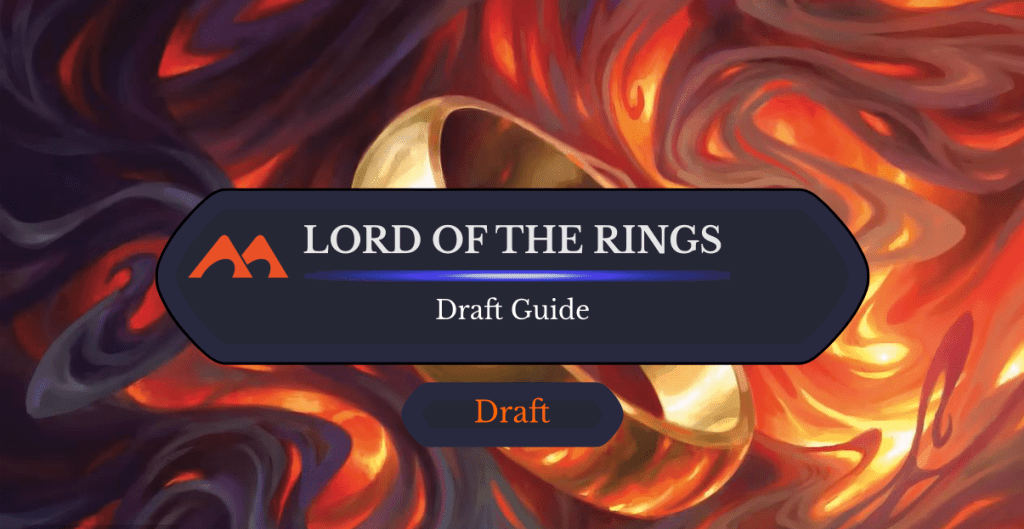
The One Ring | Illustration by Veli Nyström
Greeting planeswalkers! We’re about a week into Magic’s first foray with a Universes Beyond Draft environment. So how has The Lord of the Rings: Tales of Middle-earth (LTR) played out so far, and what should you do to win more games?
I’ll be guiding you through a general format overview, picking out the best (and worst) cards in the set, as well as giving you a read on how the 2-color archetypes play out. Consider listening to this in the background while you read ahead:
Format Big Picture
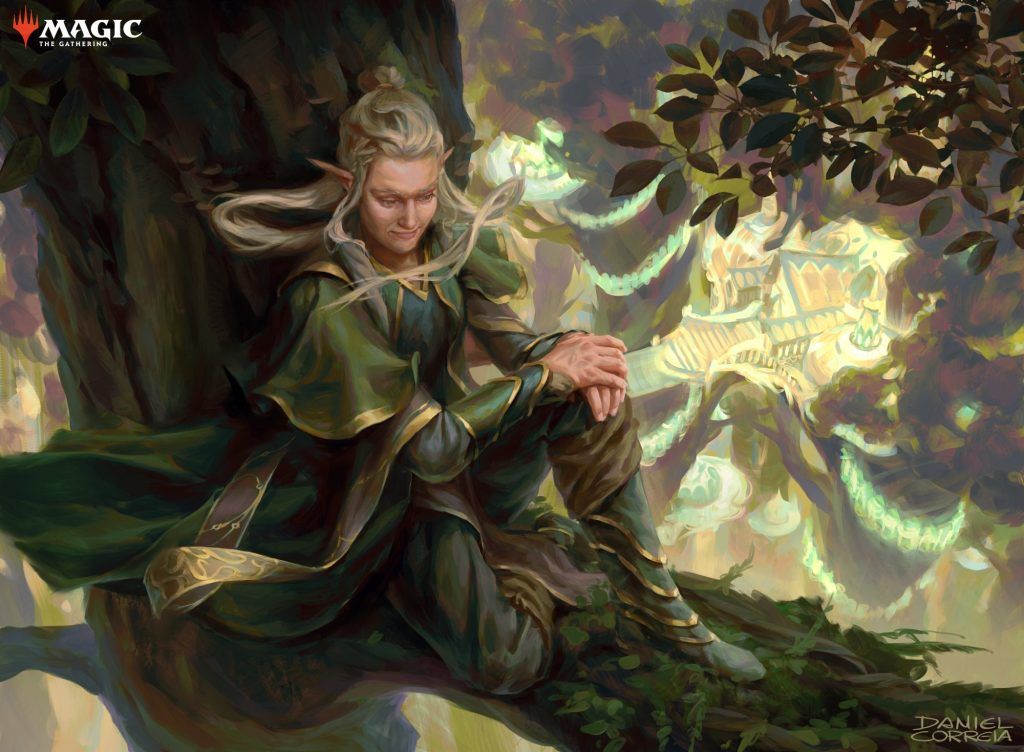
Lothlórien Lookout | Illustration by Daniel Correia
I’m going to be blunt: LTR is one of the weakest and most poorly balanced sets I’ve played in years! This weakness appears mostly at rare and common, while the poor balance is all over the place and includes both card balance and color balance. Black is substantially better than other colors, and green is almost Battle for Zendikar levels of bad.
Cards like Forge Anew, Fangorn, Tree Shepherd, and Borne Upon a Wind do not feel as though they are from the same set as Meneldor, Swift Savior, Call of the Ring and Claim the Precious. There are also several commons that you should rarely or never play.
LTR is almost the polar opposite of the previous set, March of the Machine; MOM’s general power level was high, there were few unplayables, and I first-picked my rare 90% of the time. In LTR, I first-pick my rare about 33% of the time and feel as though I’m picking mid-level cards most of the time. LTR is also substantially more aggressive than MOM, for many reasons:
- “Tempted by The Ring” consistently applies pressure, mitigating mana problems, and ending games. It does nothing for you if your plan is just to sit behind Shire Scarecrow and cast every legend you remembered from the films.
- Amass is another subtly aggressive mechanic, as boosts to your army have “haste” because they are effectively pump spells.
- The set is full of solid, cheap pump spells and “The Ring Tempts You” makes combat more predictable. For example, “skulk” from the first Ring ability means only certain blocks can happen, and thus they often do.
- Every color has a playable 1-mana combat trick: Escape from Orthanc, Deceive the Messenger, Shelob's Ambush, Rush the Room and Pippin's Bravery.
- Many rares are bad and there aren’t many rewarding expensive cards to play. The best large creatures are the landcyclers, which encourage you to skim on basics.
- Themes like Food and draw-two have sparse support, which means that a good LTR deck is often just one with a strong curve + decent card quality.
What this means for gameplay is that LTR is scrappy. You can run people over just by playing creatures and pump spells without doing anything fancy. There are still synergies to play with, and control is also quite viable. has been one of my favorite decks because of how easily it can overpower a random curve of creatures.
Mechanics
Because you’ve already had LTR for a week, I don’t want to waste your time with “this is The Ring mechanic. It works like [four paragraphs of explaining].” Instead, the focus of this section is to put mechanics into raw gameplay terms.
The Ring Tempts You
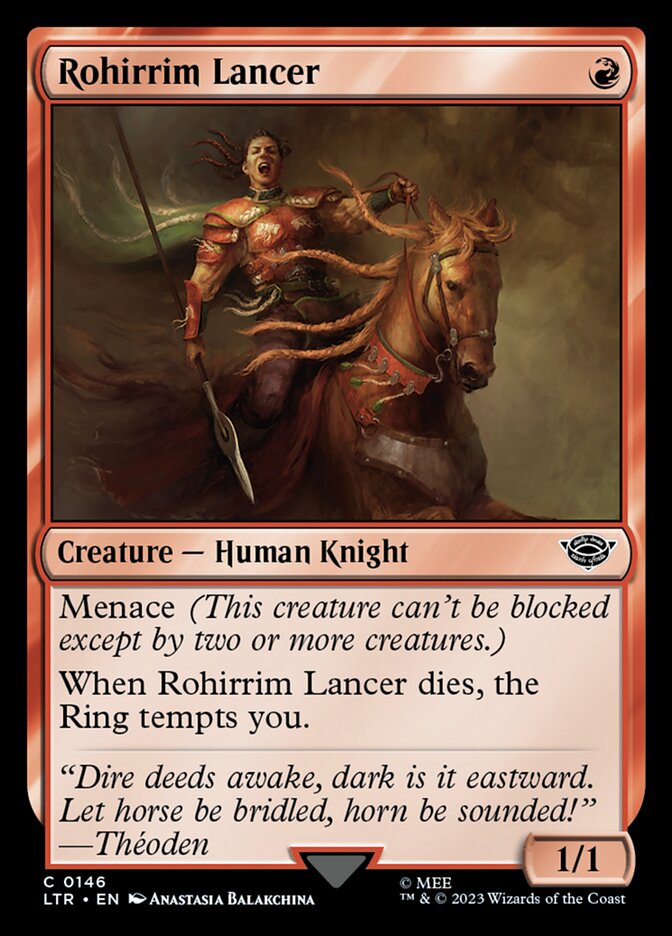
It shouldn’t be a big surprise to you that The Ring mechanic is an important part of a set called “Lord of the Rings.” It’s one of the main reasons games in this set don’t end up in constant board stalls. The levels tend to play out this way:
- You get a chip shot or two with this level (or even target nothing if you’re casting Birthday Escape). Skulk is underwhelming!
- This level is where the mechanic starts to actually matter. Level two is very relevant to prevent flooding and enable reliable attacks.
- The sac mode has underwhelmed me quite a bit. While dreamy on something like Rohirrim Lancer (“I’ll take one” says your opponent), I often find this mode to be flavor text. This is because your 1/1 ringbearer often trades with other 1/1s.
- Level four is really polarizing in that it can either threaten a clock against your opponent, or be brick-walled by some 1/3 you need to topdeck a kill-spell for. This is unusual for a mechanic that builds up like this, and the subjective nature of The Ring gives you a lot of room to outplay/misplay with it.
Every time you’re “tempted” by The Ring, you will of course choose a ringbearer. The ideal ringbearer is a 1/x creature with evasion, like a 1/1 flying spirit or the aforementioned Rohirrim Lancer. It’s sometimes prudent to make a large creature your ringbearer so that you can start looting, especially if your 1/x would just bounce off something else. The best choice for ringbearer is often whatever makes the most sense in the short term because you can just change your ringbearer if you can tempt again later.
The real worth of temptation will always be tied to whatever board state you’re currently looking at. Evaluating cards with this mechanic can be tricky, so we’ll go over the best ones and the ones that you will only play if The Ring is important to your deck.
Best Cards for Tempting
Claim the Precious is the only slam-dunk common with the mechanic, as 1BB sorcery “destroy target creature” is already great on its own. The other cards that tempt at common are virtual vanilla creatures or simple effects like Sam's Desperate Rescue, Soothing of Sméagol, and so on. These cards lack the raw rate of Claim the Precious, which means they range from “curve filler” to “pretty good” depending on how much your deck values The Ring.
There are a number of more powerful cards with the mechanic at uncommon. Generally they either tack “the ring tempts you” onto an already good card, or are excellent ringbearers that reward you for investing in the mechanic, like Bilbo, Retired Burglar and Frodo Baggins. Cards like Gollum's Bite, Ranger's Firebrand, and Dúnedain Rangers are very good!
How Much Should I Care About the Ring?
“The ring tempts you” is never going to be worth a full card, but the effect stacks nicely with itself. Some relevant considerations for how much you should value it:
- How many good ringbearers do you have? Examples include Spirit tokens, Dunland Crebain, Lothlórien Lookout, etc.
- Do you have any cards that specifically pay you off for tempting, like Gandalf, Friend of the Shire and Faramir, Field Commander?
- How much tempt do you have already? More is better, so this can determine whether or not a medium card like Birthday Escape makes your deck.
- What is the opportunity cost of playing the card? Tempts often come on curve-filler creatures, so picture something like Mirrormere Guardian versus Captain of Umbar. Is tempting better for your deck than the alternative card you’d slot in instead?
- Is The Ring providing any extra value for you? Remember that it’s an easy source of legendary creatures, and can also provide a 0-mana extra draw for cards like Gwaihir the Windlord.
Advice for Playing Against The Ring
The same creatures that skulk well block skulk well. This means that this is the best set for 1/3s and 0/3s that I’ve ever seen. Pelargir Survivor and Mirkwood Spider can do a great job of holding back your opponent’s ringbearer. Just be aware of combat tricks as your blocks will be rather predictable.
Amass Orcs
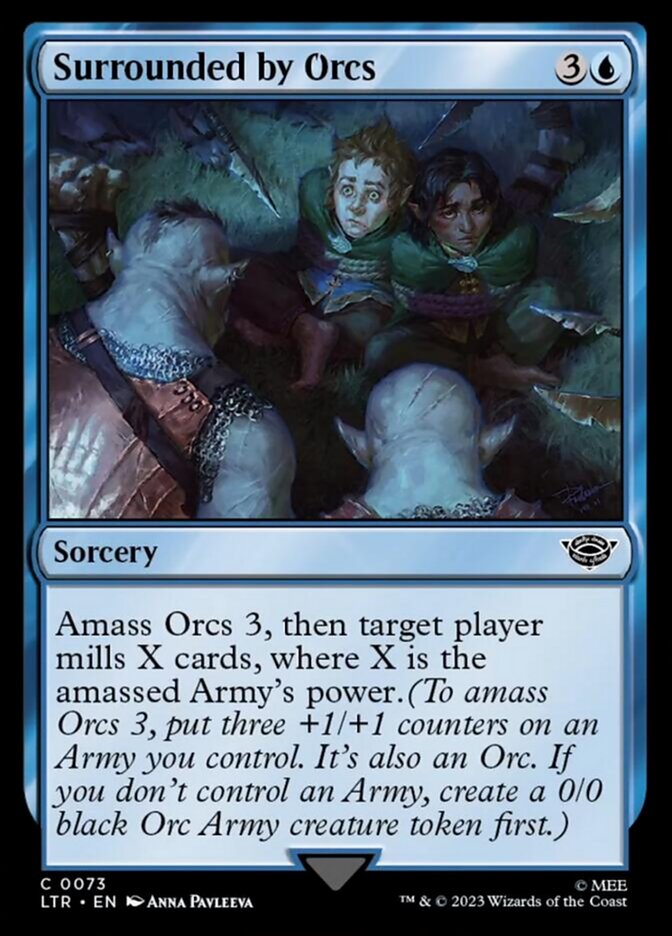
Amass has returned from War of the Spark with a new twist; it’s always an orc army in this set. This is relevant for two reasons:
- The central reason is the orc/goblin theme, so that your army can get boosted by lords and trigger a couple of powerful effects.
- The second amusing reason is for Fog on the Barrow-Downs. WotC was able to include a Pacifism in this set without ruining army gameplay. “Becomes a Spirit” makes it so you’re not stuck amassing a useless army. Instead, you create a new one and restart the process.
There isn’t that much to say about amass. It’s a source of orcs for , of spells for /, and provides aggression for winning games. It contributes to a cute mill win-con with Surrounded by Orcs. Trading off small-medium armies is better for a value approach while building a large army is better for trying to end games.
Basic Landcycling
The last mechanic we’ll cover is the main way LTR lets you mitigate flood/screw, and appears on five commons: Eagles of the North, Lórien Revealed, Troll of Khazad-dûm, Oliphaunt, and Generous Ent. All of these are pretty good, though Eagles and Oliphant are the weakest ones.
I’m happy to start several copies in most decks. Because they cost rather than any colored mana, they can almost be considered a full-colored source. I have already had some success with 14-15 land decks and have seen a friend 3-0 with 13 lands. You don’t have to do this though, and it’s not appropriate for every deck. Instead, consult your curve carefully and think about how much mana you will really need on average.
If your deck is lean and mostly tops at three mana, you can consider these a full land and play a couple of them (14-15 lands). If your deck is less lean, you might just want to only shave one land (for 16) and play 2-3 copies of cyclers.
I generally stick to 17 lands in decks that are severely lacking 2-drops. This is not a set you want to stumble in, as high creature density, The Ring mechanic, combat tricks, and some direct burn (Improvised Club) make stabilizing difficult. If you are in doubt about how many lands to shave and have a couple of cyclers, 15/16 lands is probably the safest compromise.
Individual Card Evaluations in Lord of the Rings
I can’t do a full set review here, but I wanted to go over the top/worst commons for each color. I also will highlight top uncommons/rares and some higher rarity cards you should avoid.
White
White is a mediocre color in this set with lots of creatures and a couple of subthemes (humans, The Ring, and Food). White’s best commons are Errand-Rider of Gondor, Eastfarthing Farmer, Protector of Gondor, Banish from Edoras, and Hobbit's Sting. Errand-Rider is white’s #1 common for being such an easy 2-for-1 (legends are everywhere) and still playable when it “misses.”
White doesn’t have any truly unplayable commons but I’ve been unimpressed with Second Breakfast, Esquire of the King and Now for Wrath, Now for Ruin!. Restrict these to decks with strong Food, human, and go-wide themes, and cut them from those when you can too.
Blue
The weaker ones are Nimrodel Watcher, Knights of Dol Amroth and Surrounded by Orcs. Like white’s mediocre commons, these are best in decks that touch on their themes (scry elves, draw-two, and amass/mill) but not great even there.
Blue is well-balanced with one of the flatter power levels in the set. Its best commons are Glorious Gale, Lórien Revealed, Pelargir Survivor, Ithilien Kingfisher and Willow-Wind.
Black
LTR’s best color by a mile is an embarrassment of riches. Its best commons are Claim the Precious, Dunland Crebain, The Torment of Gollum, Troll of Khazad-dûm and Mordor Muster. Claim the Precious is arguably the best common in the set.
What makes black so good though is how strong the rest of its commons are, as I could probably name five more black commons better than most of the other colors’ top five.
Black’s worst commons are Nasty End (good against Bewitching Leechcraft and other Aura-removal), Orcish Medicine (outclassed by Shelob's Ambush) and Mordor Trebuchet (playable in some decks, best with sac synergy).
Red
Red is very uneven in this set. Its best commons are Smite the Deathless, Rally at the Hornburg, Warbeast of Gorgoroth, Quarrel's End and Swarming of Moria, with Relentless Rohirrim as a close #6.
Beyond those though, it has a lot of inefficient junk like Gimli's Fury, Gimli's Axe, and Rohirrim Lancer. The two Gimli’s cards in particular are traps that you should never really put in your decks.
Green
Green is the worst color in LTR. Its best commons are Ent's Fury, Enraged Huorn, Generous Ent, Wose Pathfinder, and Bag End Porter.
Generally, you should be green because you are doing something big/colorful, or you have very strong support for a green-adjacent theme like Food. Green’s worst cards are Brandywine Farmer, Revive the Shire, Elven Farsight and Galadhrim Bow.
Green’s “filler cards” are worse than other colors’. I’m not opposed to drafting green occasionally, but I would look to premium uncommons/rares to get me into it first.
Best Uncommons By Color
Believe it or not, uncommon is where most of the real power in this set is. Drafts will often be shaped by following powerful signpost uncommons or monocolor legends that indicate an archetype/color is open. I tabled The Mouth of Sauron at my last FNM and instantly locked into , for instance.
Additionally, most uncommons in this set are playable at worst, and generally tend to edge out commons on pure rate. The few premium cards in this set stand so far above the vast reaches of filler that you’d be foolish not to pursue them! Let’s examine some cards that stand out for each color at uncommon.
White
White’s legendary uncommon creatures are pretty good overall, with the best ones being Samwise the Stouthearted and Bill the Pony. Rosie Cotton of South Lane is only good if you can build around it in a Food/tokens deck.
Blue
Blue’s best uncommon is Meneldor, Swift Savior, which is a Phantom Monster with real upside. That’s an incredible rate for a set like this! Blue also has some excellent cards like Saruman's Trickery, Gandalf, Friend of the Shire, and even a bomb horse in Horses of the Bruinen that are better than every common not named Claim the Precious. There are other build-around uncommons for specific themes like elf-scry and instant/sorcery matters.
Black
Gollum's Bite, Bitter Downfall, Gollum, Patient Plotter, Gothmog, Morgul Lieutenant, Oath of the Grey Host and Voracious Fell Beast are all great cards! The rest are either good in specific archetypes or just mediocre filler cards.
Red
Fear, Fire, Foes! is one of the best uncommons in the set, and the only non-rare that screams “splash me!” Red’s other offerings at uncommon are strong too, though you’ll want to leave Fiery Inscription for dedicated instant/sorcery decks only. Most red uncommons deal with armies/orc decks or humans, and help get you into either theme.
Green
Quickbeam, Upstart Ent, Dúnedain Rangers and Stew the Coneys are green’s best uncommons. Green also has some interesting payoffs for Food (Meriadoc Brandybuck, Peregrin Took) and elves (Glorfindel, Dauntless Rescuer and Celeborn the Wise). The rest of green’s uncommons are unimpressive cards like Long List of the Ents, Gift of Strands, Shortcut to Mushrooms, and Entish Restoration.
Uncommons to Avoid
Alas, as with all things LTR, the bad cards must be addressed. Some uncommons you should always avoid include:
Bill Ferny, Bree Swindler
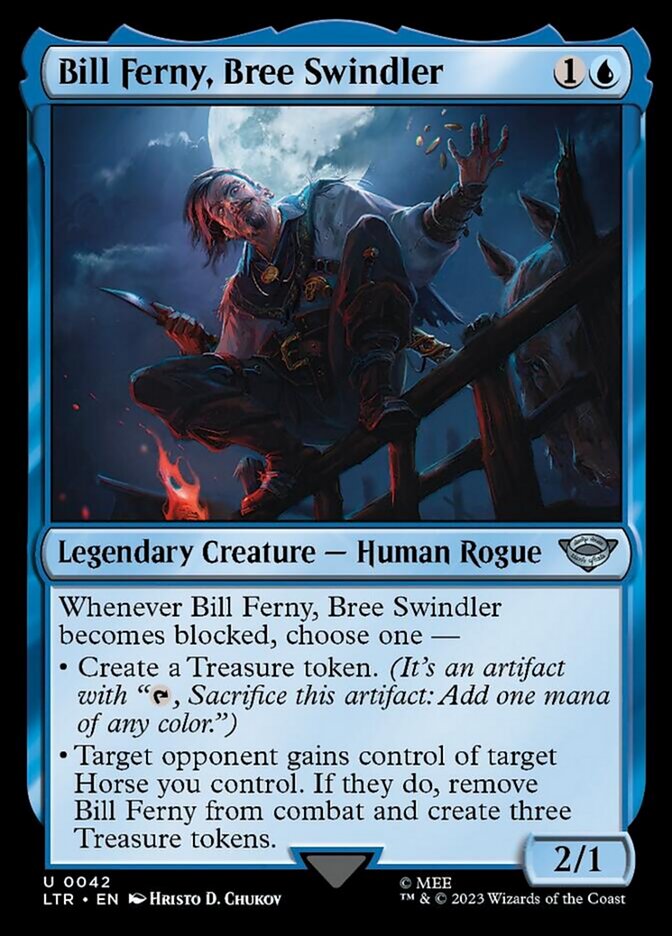
Bill Ferny, Bree Swindler is not unplayable, but plays like a legendary Coral Merfolk with minor upside.
Stern Scolding
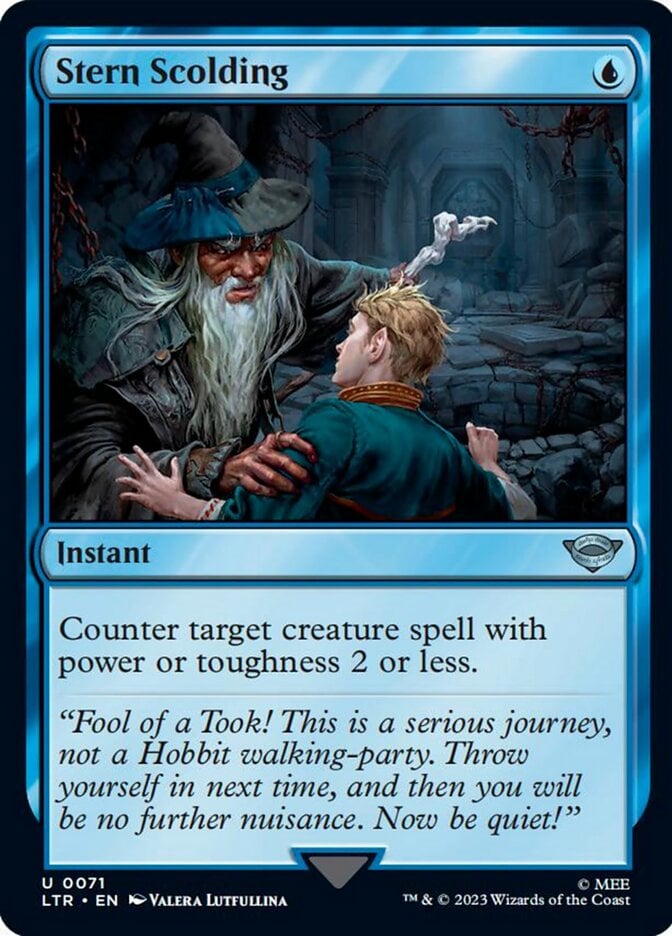
Stern Scolding might be sideboard material if you know what you’re doing, but risky and potentially useless.
Rising of the Day
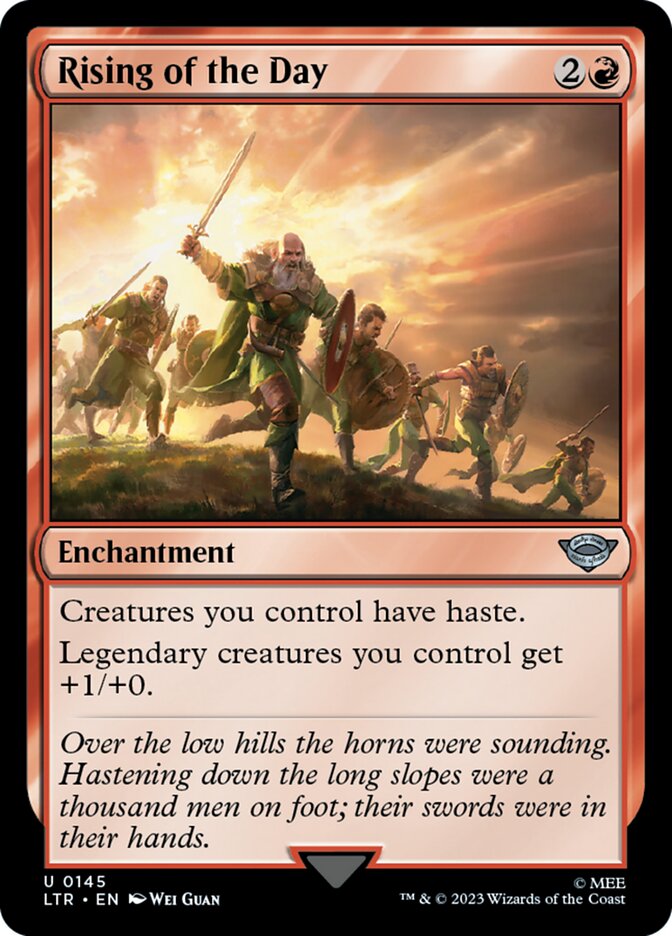
Rising of the Day is a horrible card, just play another creature or pump spell even in humans. Neither haste nor +1/+0 is worth a card.
Gríma Wormtongue

Gríma Wormtongue is fine, but feels like a legendary Horned Turtle half the time I see it in play.
Shortcut to Mushrooms

Shortcut to Mushrooms is playable if you can build around it with Food/Treasure/flicker, but the payoff is mild and doesn’t overlap well with other incentives.
Ringsight
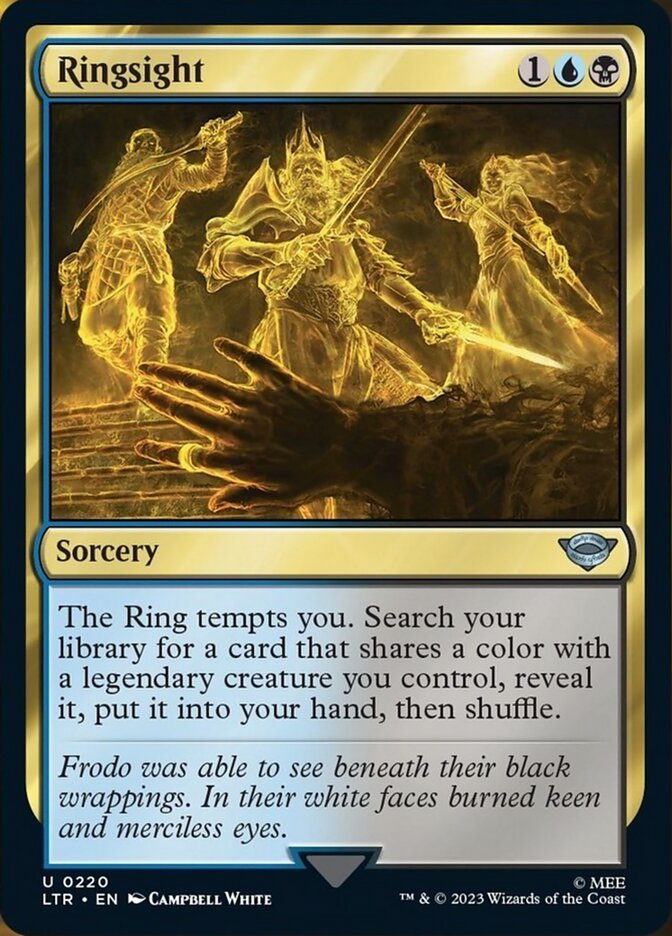
Ringsight will always tutor something if you have a creature thanks to the ringbearer status. However, most decks are still not interested in a conditional 3-mana tutor, so only play this if you have something broken like Witch-king of Angmar to grab.
Ent-Draught Basin

Ent-Draught Basin is a potential build-around for a deck with a lot of 1/X’s, but the card is not efficient and this conflicts with skulk. Recommend avoiding it!
Stone of Erech
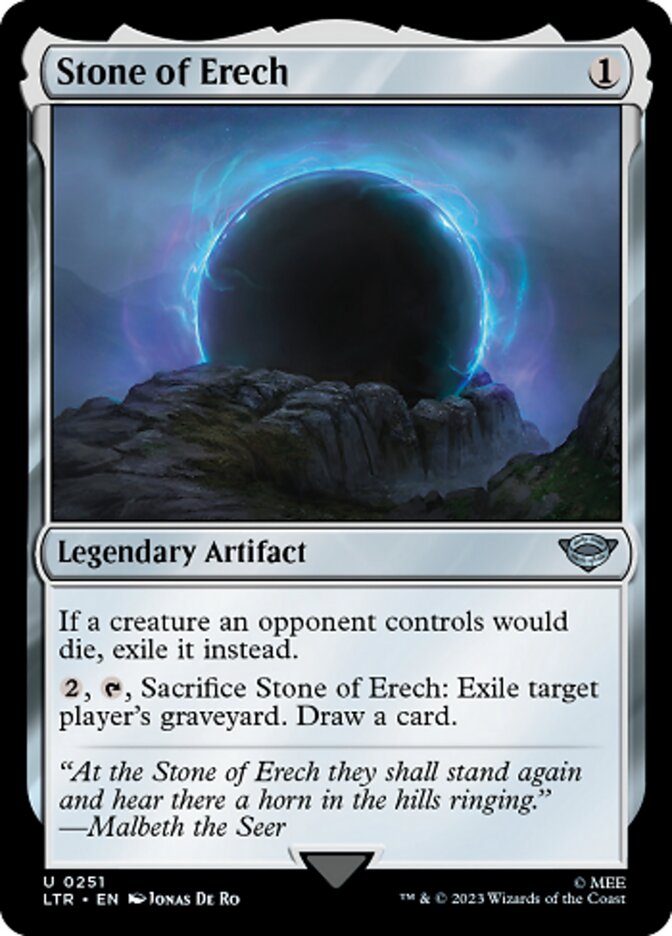
Stone of Erech is a sideboard card with no clear usage, avoid at all costs.
The Best Rares in Lord of the Rings
Witch-king of Angmar
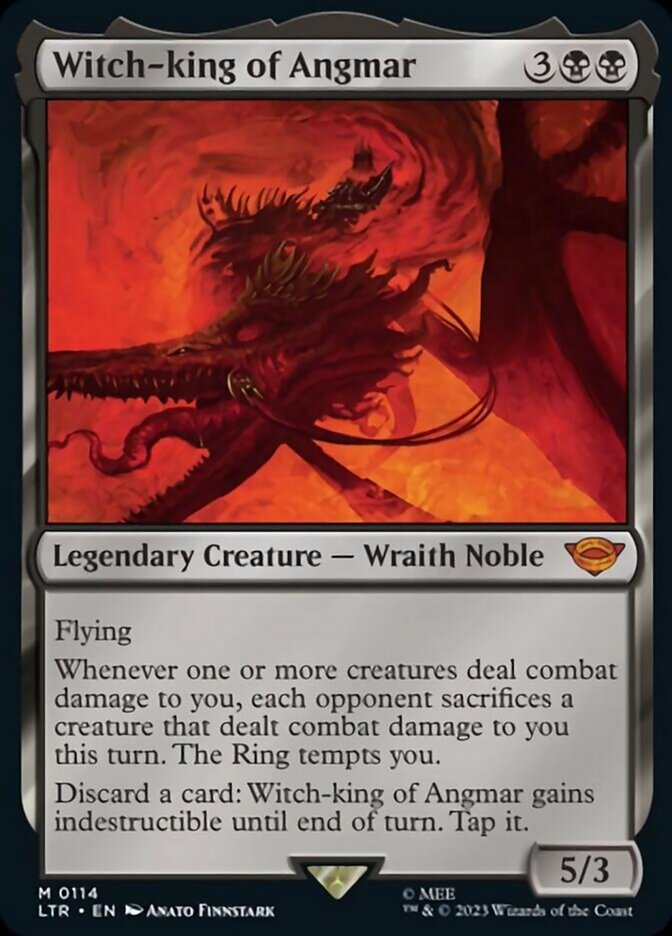
Witch-king of Angmar is a top-tier bomb. It’s hard to kill plus makes combat miserable for the opponent, and it’s a 5-power flier.
Spiteful Banditry
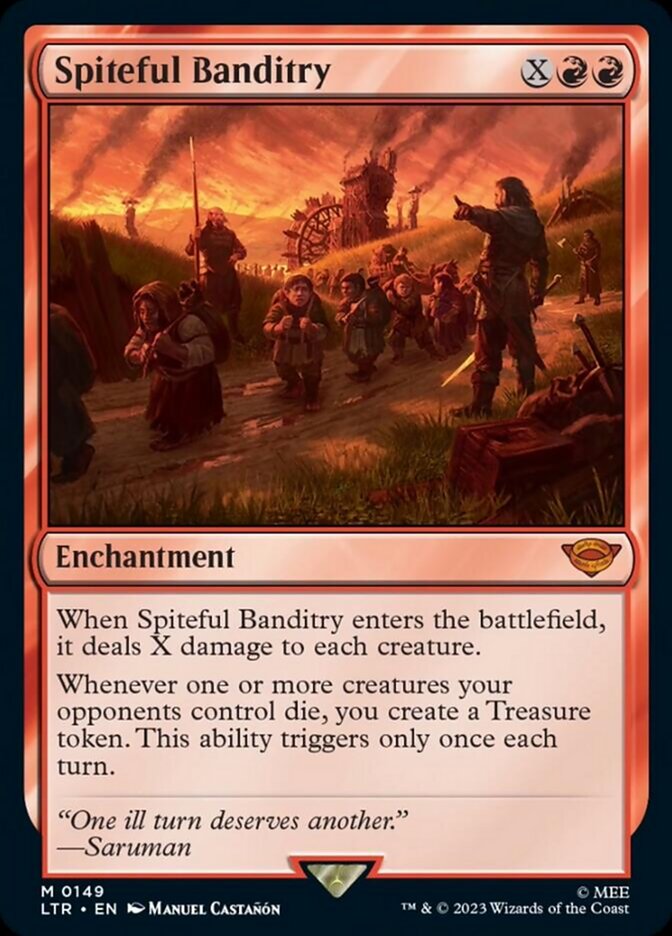
Spiteful Banditry is one of the few sweepers in the set. It has a solid rate + free Treasure upside.
Radagast the Brown
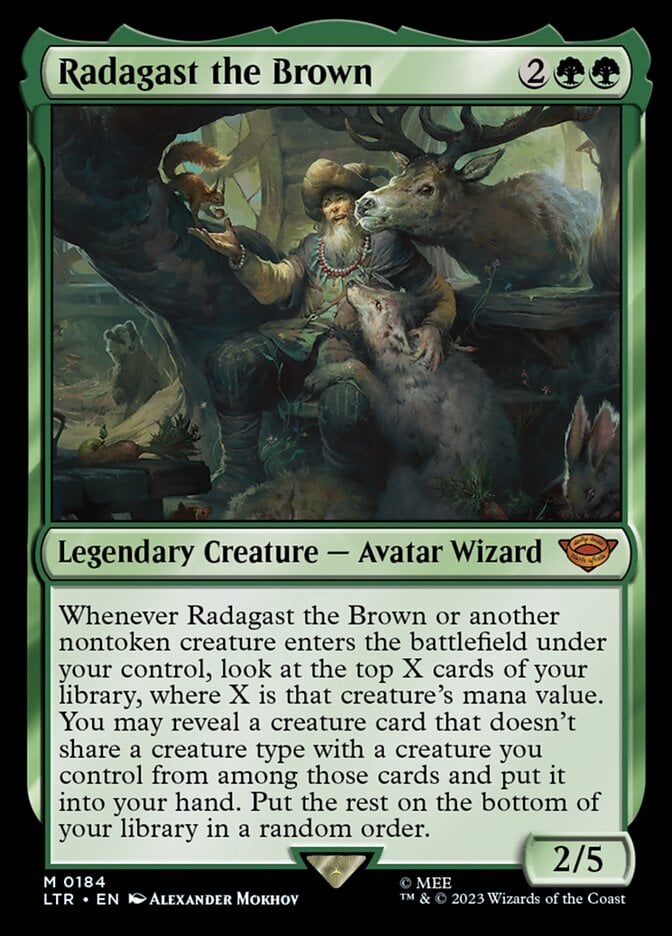
Radagast the Brown is a classic broken Limited cards. It’s a large blocker that draws cards for free.
Arwen, Mortal Queen
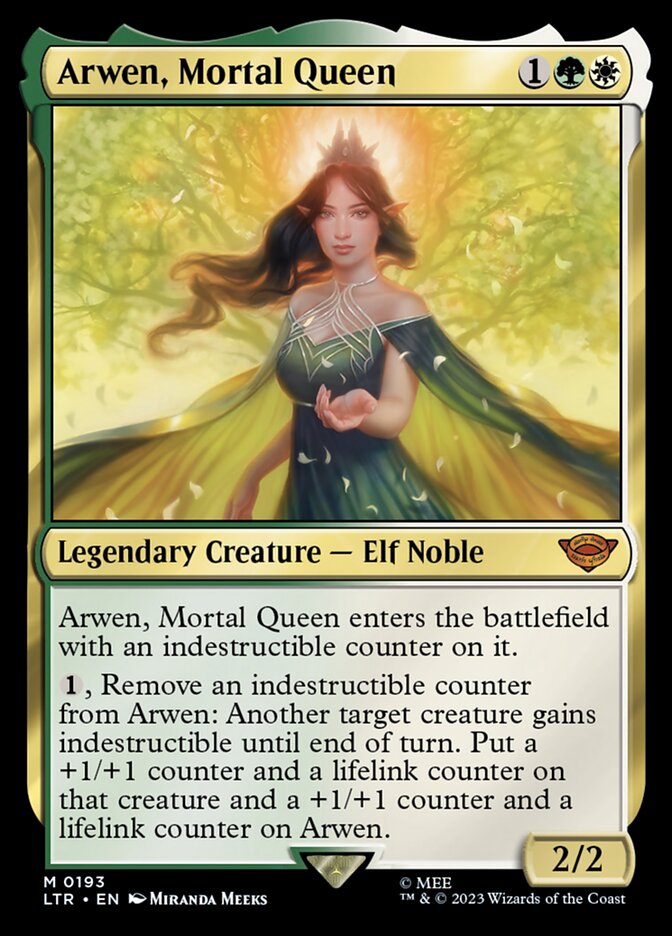
Arwen, Mortal Queen is the best rare in the set as a cheap indestructible creature that threatens a powerful lifelink swing.
Sauron, the Dark Lord

Sauron, the Dark Lord is a proper bomb worth splashing for. It’s large, hard-to kill, and full of value especially if you can tempt afterwards.
Aragorn, the Uniter
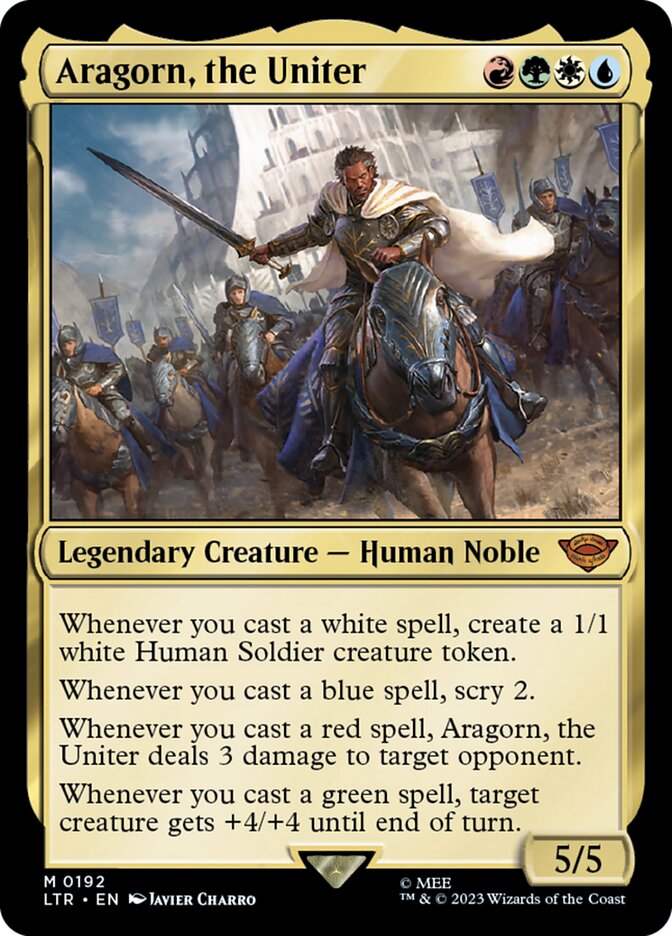
Aragorn, the Uniter is a 4c build-around, hard to cast but very powerful for the rare x deck that rises to the challenge of doing so. The set has the fixing required to do this but few other incentives!
Andúril, Flame of the West

Andúril, Flame of the West is an amazing P1P1 as it’s a high-power-level equipment that goes in literally every deck, best with some ring tempting for consistent attack triggers.
Palantír of Orthanc
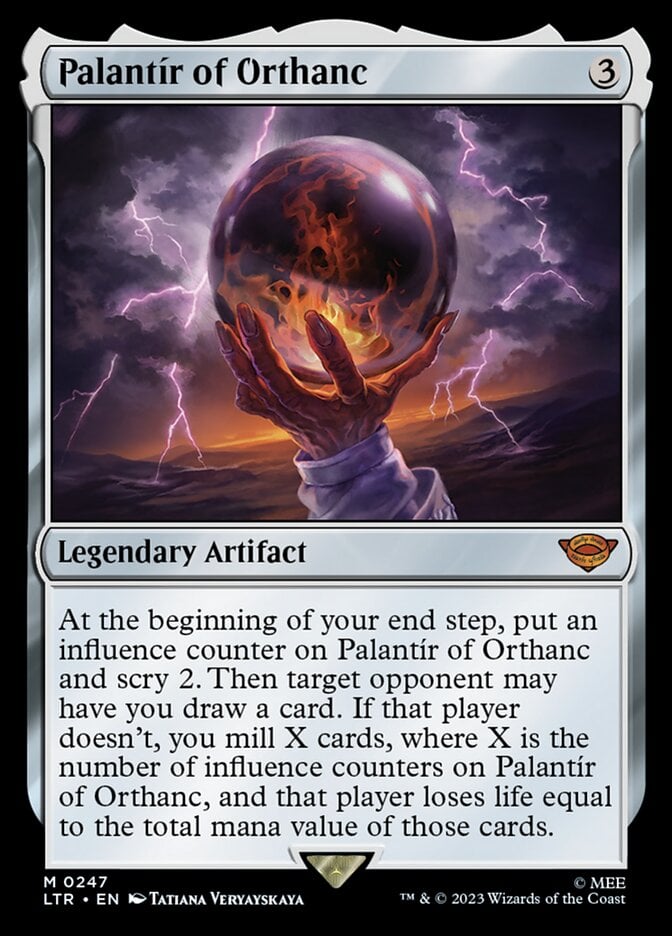
Palantír of Orthanc is the scariest turn-three play in the set, devastating if it sticks around several turns as your opponent is stuck either giving you free cards or risking death every turn.
Flowering of the White Tree
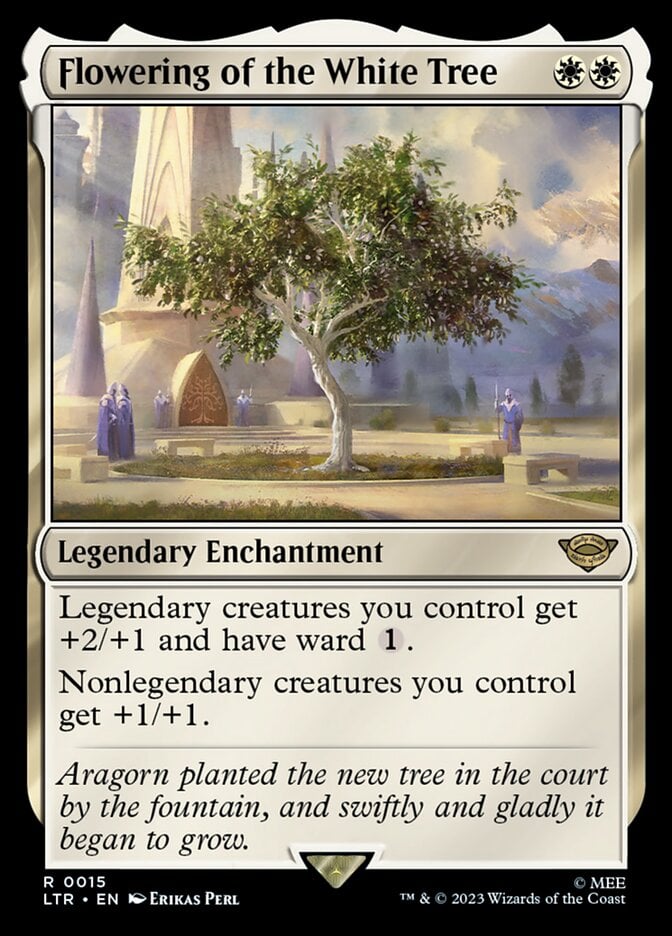
Flowering of the White Tree is an excellent reason to be base white. +1/+1 for is good but the legendary bonus in a set full of legends is just filthy.
Rangers of Ithilien
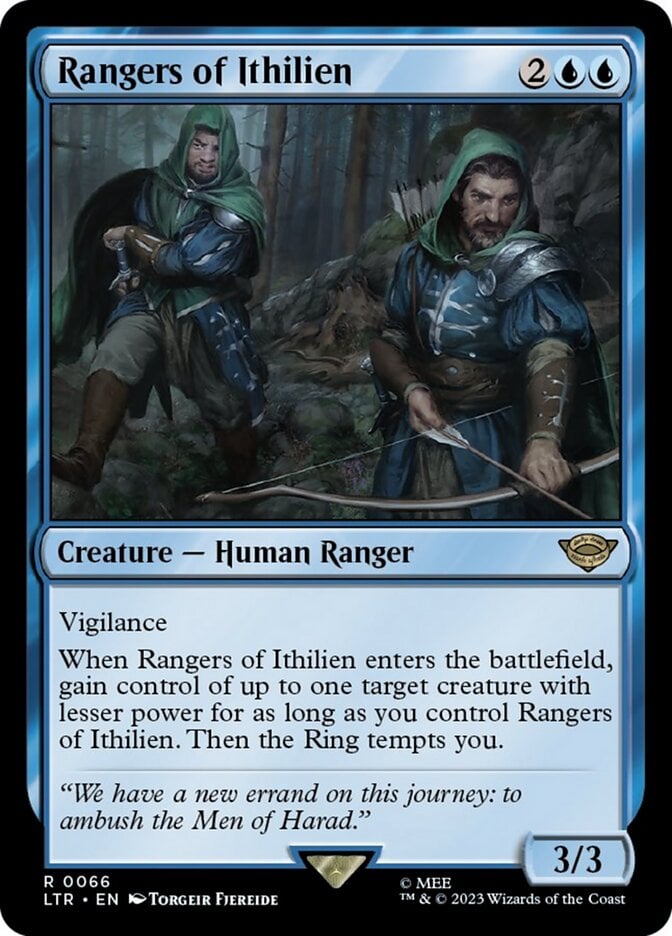
Rangers of Ithilien is a 3/3 for four with vigilance, but the weak Mind Control and a free ring tempt makes this a top-tier rare.
Call of the Ring
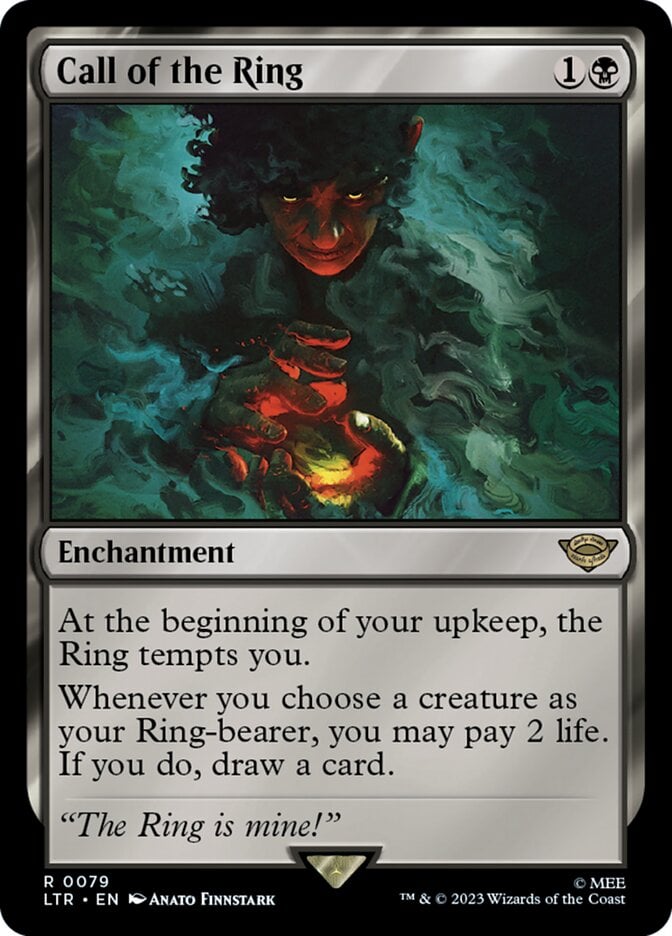
Call of the Ring is a disgusting turn-two play that can just run away with the game. It helps that you’re never forced to pay two life if you don’t want to.
Orcish Bowmasters
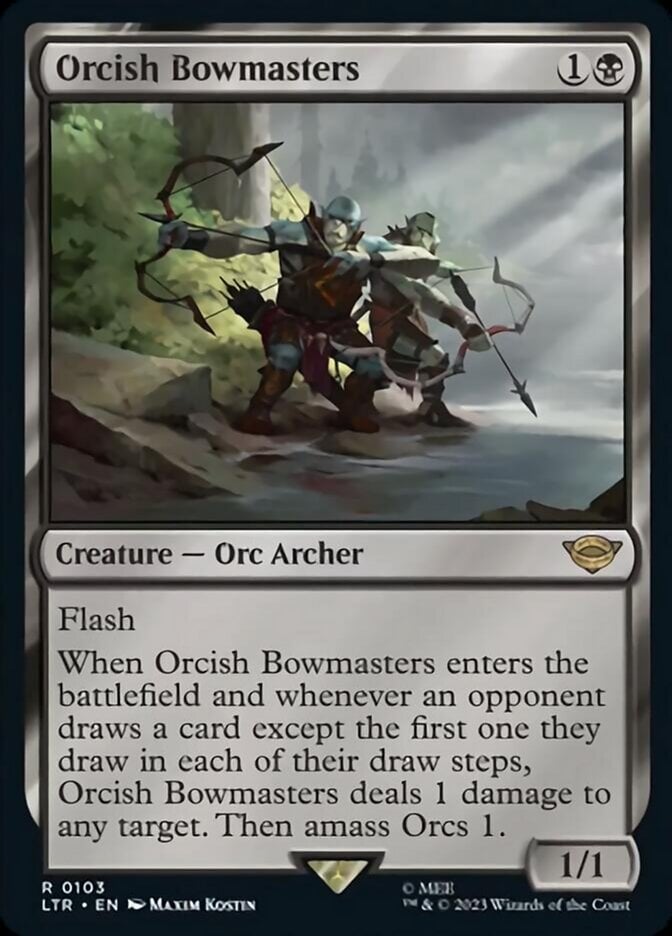
Orcish Bowmasters excels in a set with a lot of x/1’s so this has been rather good for me. The extra card draw line also punishes your opponent for tempting or drawing cards in general.
Fall of Gil-galad
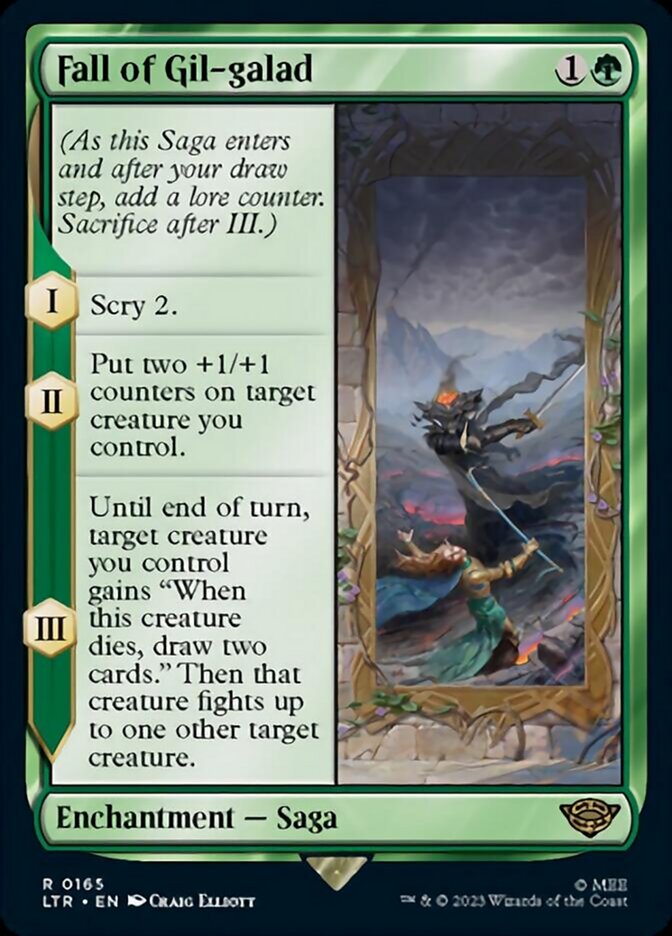
Fall of Gil-galad is great value that can occasionally 3-for-1 but also plays well as a 1-for-1. Use a Mirkwood Spider for best results!
Faramir, Prince of Ithilien

Faramir, Prince of Ithilien is a broken rare that severely punishes your opponent for letting it live. You either end up ahead on cards or 1/1s but you win either way. Splash it if you can!
Doors of Durin
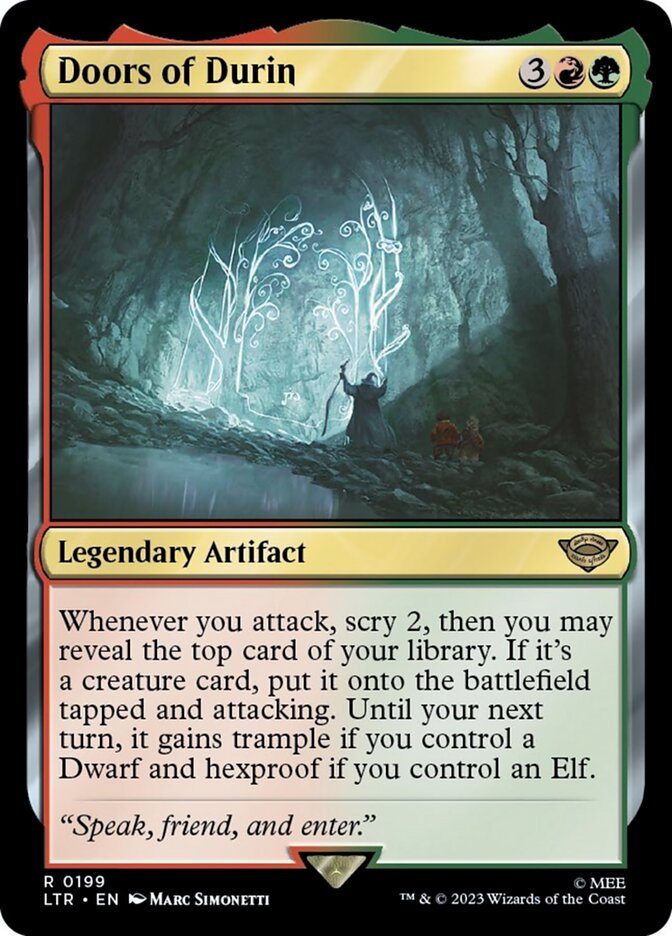
Doors of Durin is a little clunky and unreliable, but this snowballs quickly with some luck and can cheat 6-drops into play for free. Try to play lots of cycling creatures with this if you can!
Aragorn, Company Leader
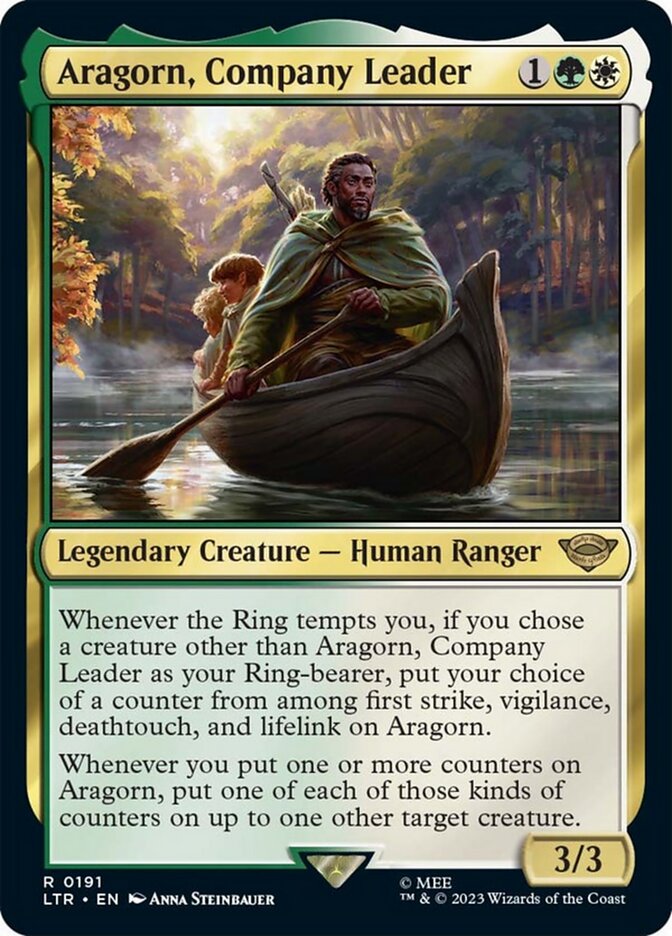
Aragorn, Company Leader is a ring-tempting build-around with huge upside, but also good enough base stats to never be bad.
King of the Oathbreakers
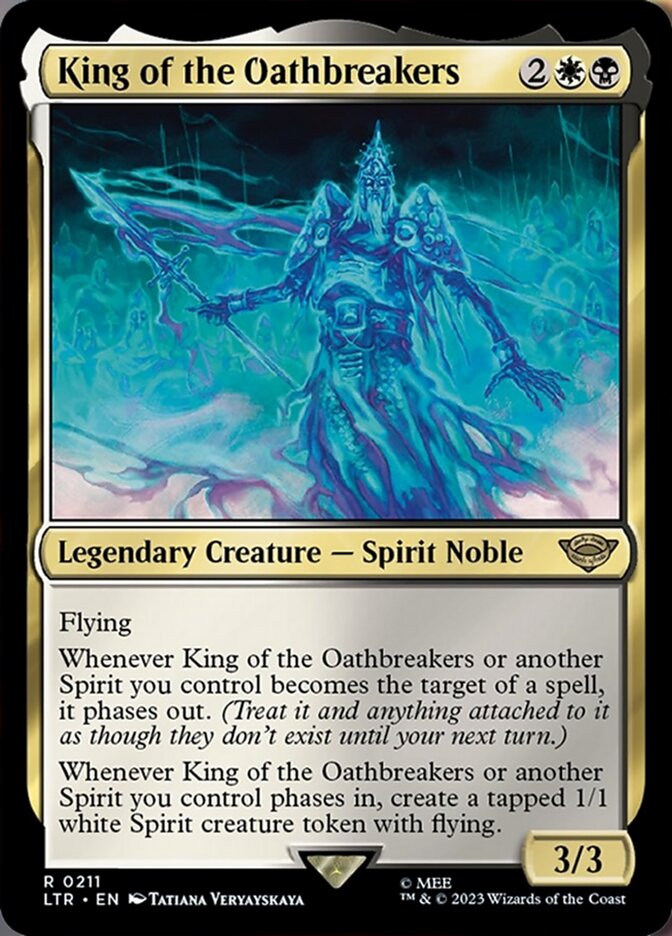
King of the Oathbreakers is a nigh-unkillable Phantom Monster that essentially has a weird form of hexproof.
Shelob, Child of Ungoliant
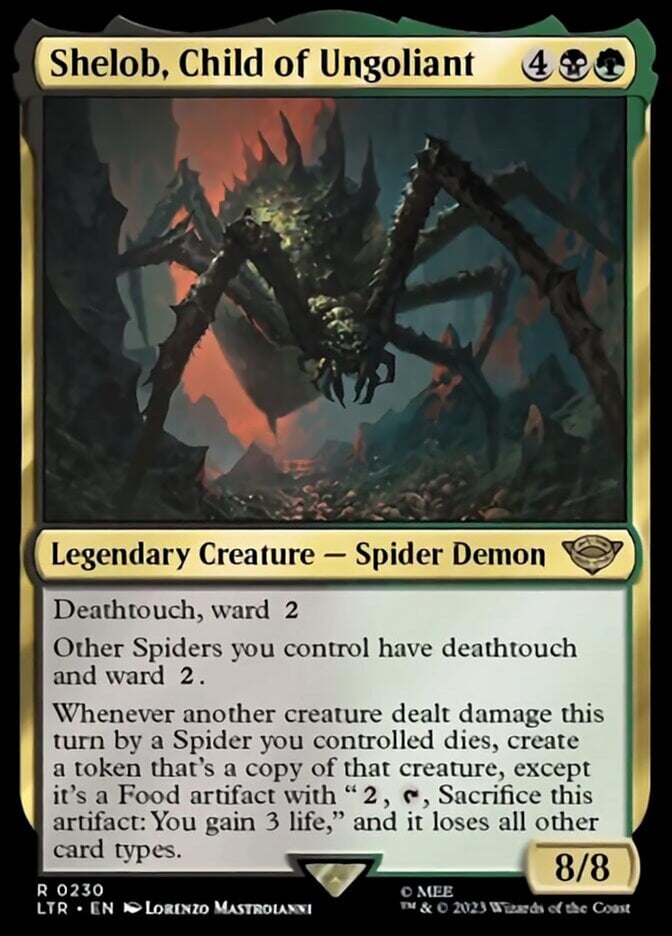
Shelob, Child of Ungoliant is a powerful beater worth splashing if possible. It’s difficult to answer and punishes the chump-blockers its 8/8 body inevitably invites.
Galadriel of Lothlórien
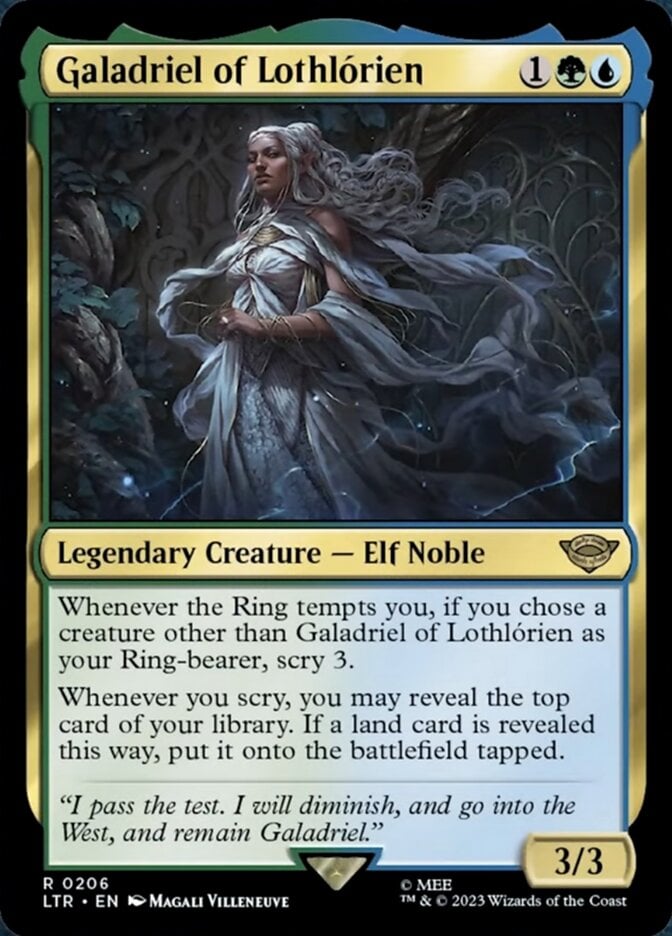
Galadriel of Lothlórien is the best elf payoff there is, providing insane card advantage if you can scry a couple of times.
Horn of Gondor

Horn of Gondor is a self-contained win condition that even gets itself started. Try to play as many other humans as you can if possible.
The Worst Rares in Lord of the Rings
The Watcher in the Water

The Watcher in the Water needs instant-speed draw and a sac outlet, too much work for too little payoff.
Hew the Entwood

Nothing to say here, this card is meant for a different format
Last March of the Ents

Last March of the Ents might work in a dedicated ramp deck, but this is really expensive and unreliable.
Tom Bombadil

There are not enough sagas to make Tom Bombadil work.
Mount Doom
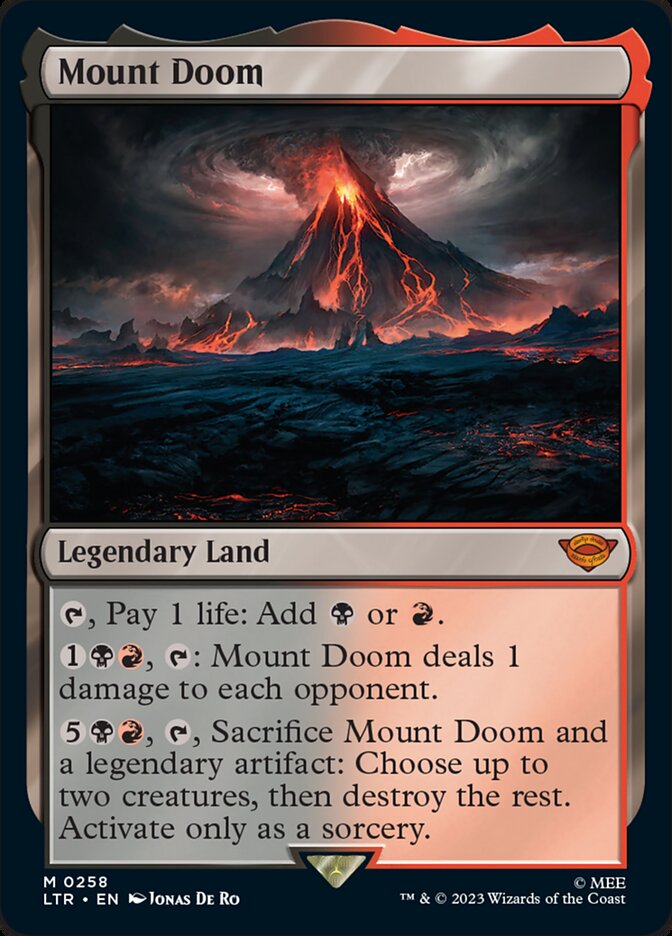
The upside of Mount Doom isn’t worth taking pain 100% of the time.
Forge Anew
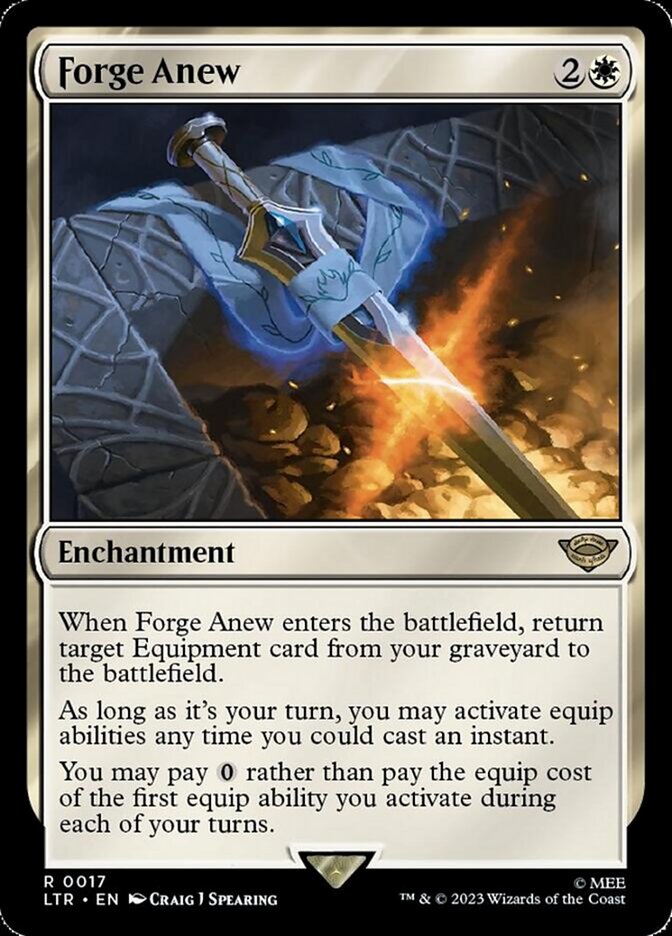
Forge Anew requires discard setup to get equipment into your graveyard, and the payoff isn’t even high to begin with.
Borne Upon a Wind
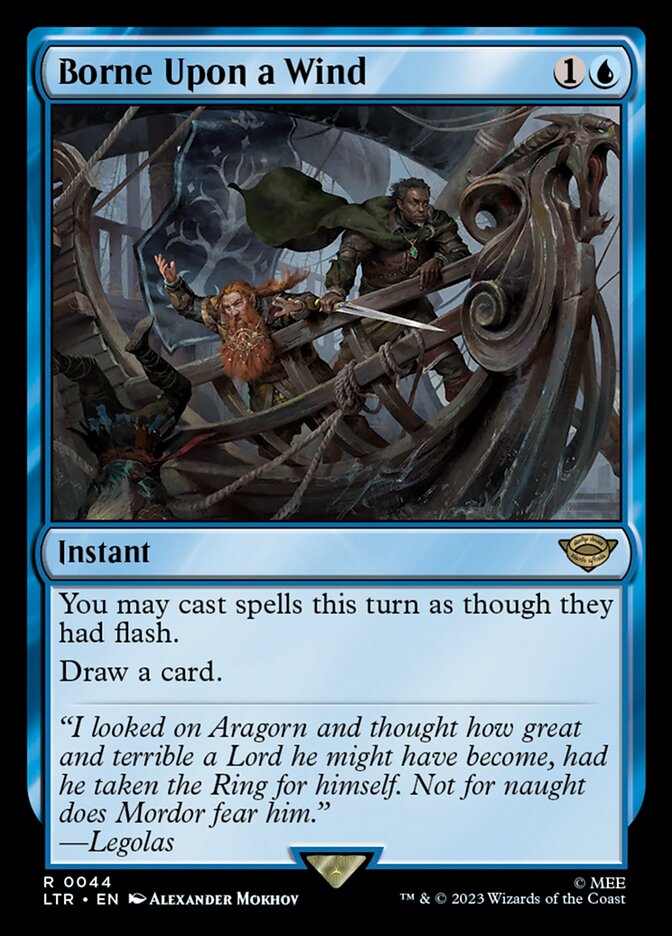
Borne Upon a Wind is too expensive for what’s essentially a cantrip.
Lost Isle Calling
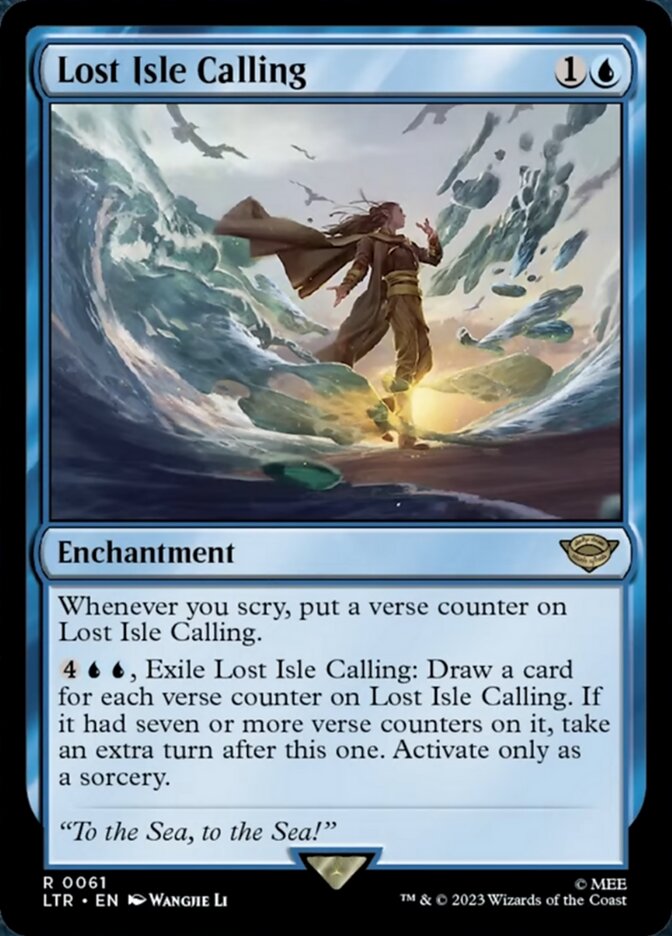
Lost Isle Calling only works if you have some ridiculously high number of scry elves, so only build around if it tables and you are already elves.
One Ring to Rule Them All

One Ring to Rule Them All is better than every other card on this list, but gets mentioned because “nonlegendary” is no joke in this set. This is not a bomb rare and will often let you down, but it still might be of use if your opponent is going wide or lacking legends.
Display of Power
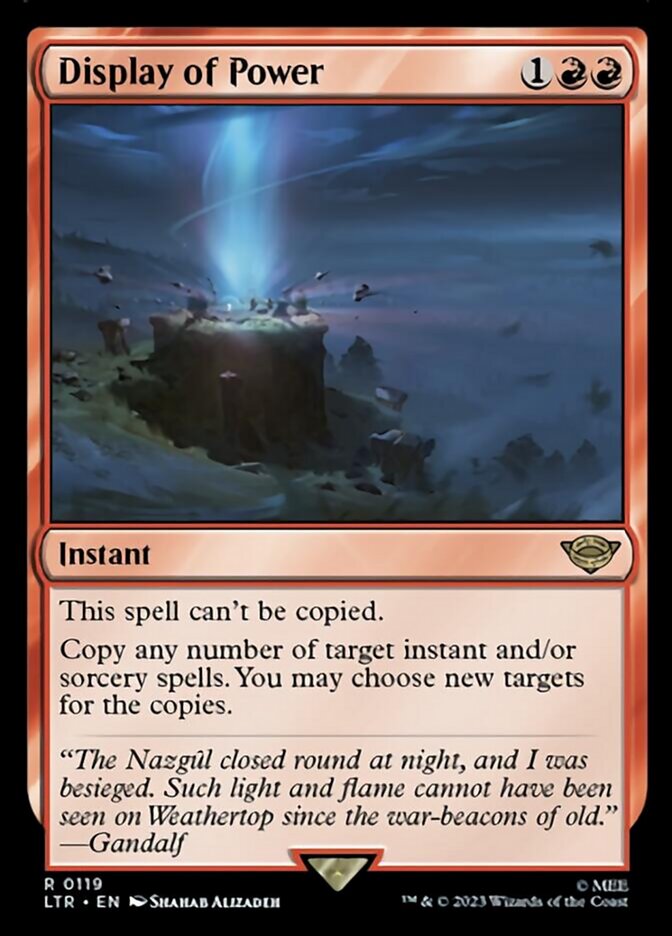
Display of Power could maybe fit in a very dedicated spells deck, but it’s otherwise not worth it.
Fangorn, Tree Shepherd

Fangorn, Tree Shepherd is too expensive for too little payoff.
The Ring Goes South

The Ring Goes South is a build-your-own Explosive Vegetation, but it’s a weird card with a lot of potential to fail.
Sharkey, Tyrant of the Shire

Sharkey, Tyrant of the Shire is a Pillarfield Ox that hoses rare lands, but it’s on the very low end of playable.
The 2-Color Archetypes in Lord of the Rings
Blue/White Draw Two
Prince Imrahil the Fair and Gwaihir the Windlord are good payoffs, but there’s not much else for this incentive. Your best bet for triggering them is to rely on level two of The Ring. Expect to build as a tempo deck with a good curve and a focus on evasion/combat tricks.
Blue/Black Control/Amass
The Mouth of Sauron is one of the best 2-color signposts there is, which helps balance out how mediocre Ringsight is. wants to crush aggro decks with kill spells and then win with large creatures/armies. You can attempt a mill wincon with Surrounded by Orcs and Pelargir Survivor, which could give you an edge in slow mirrors.
Red/Black Orcs/Goblins
This is probably the best 2-color pair in the set, as the build-arounds are great and the overall card quality is very high. There’s nothing fancy about it, just take good orcs and goblins, payoffs, removal spells, and pump spells and mash it all up into one coherent deck.
Green/Red Midrange
has the lightest theme of all 2-color pairs, though both its uncommons (Friendly Rivalry and Strider, Ranger of the North) are strong. This lack of focus plus red’s access to mana fixing (via Swarming of Moria) makes it one of my favorite shells for ambitious greed piles. Raw though is just another aggro deck with creatures, pump spells, and a mana curve. Wose Pathfinder will likely be your top common regardless.
Green/White Food
This is a fun archetype that can occasionally be worth building around. The key is to stack as many good uncommons as possible: I’m dreaming of having Rosie Cotton of South Lane, Peregrin Took, Butterbur, Bree Innkeeper, and Samwise Gamgee all out at once. As impressive as this sounds, it’s been very difficult to do in practice. Eastfarthing Farmer, Many Partings, and Mushroom Watchdogs are important glue for this deck too. If the food theme isn’t very open, I would recommend just avoiding entirely.
Black/White Ring/Legends
is a somewhat unfocused archetype that does a bit more ring-tempting than other decks. Its signpost uncommons (Denethor, Ruling Steward and Shadow Summoning) are both rather solid on rate/function. You will often be going wide and trying to grind out value/damage with evasive ringbearers.
Blue/Red Spells
Gandalf's Sanction, Gandalf the Grey and Flame of Anor show off ’s dedication to instants and sorceries. This spellslinger theme is very common for in general, so it’s not surprising to see it in familiar territory. Fiery Inscription and Glamdring get a shoutout as build-arounds for this theme as well. If you don’t have those, has felt rather underwhelming against me.
Black/Green Sac/Food/Midrange
has two strong uncommons but is softer on theming than most color pairs. Old Man Willow is just a tiny bit worse than The Mouth of Sauron, but is still strong enough on rate that I would consider splashing it. Old Man Willow is a great reason to play decent Food cards that you might otherwise not include (i.e. Many Partings). Rise of the Witch-king really wants to play with cycling creatures so that you can consistently get value with it. Most decks are big midrange piles that want to go over the top of competitors.
Red/White Humans
is doing the same thing in this set that it’s doing in every set, which is turning creatures sideways and attacking. The humans subtheme on cards like Théoden, King of Rohan, Erkenbrand, Lord of Westfold and Rally at the Hornburg should play well in most decks.
Blue/Green Elf-Scry
Finally, we come to our last color pair which is elves. There aren’t many elf payoffs, but there are a number of cards that greatly reward scrying like Arwen Undómiel, Elrond, Master of Healing and Galadriel of Lothlórien. These rate high on my “build-around-o-meter”, especially given that most cards you would need for scry filler are solid anyways. This is the archetype where cards like Grey Havens Navigator, Chance-Met Elves, Elven Farsight and Nimrodel Watcher should get some play.
Wrap-Up

Ringsight | Illustration by Campbell White
Here’s a quick recap:
- This is an aggressive, proactive set with mediocre build-around options and lots of variance in individual card power levels.
- As you are drafting, your goal is to find an open lane, usually following premium uncommons that outclass the relatively flat commons.
- Black is the best color and green is the worst, so try not to get into green unless you are getting passed very strong cards/synergies.
- Pay close attention to combat/open mana, as The Ring limits your blocking options and there are lots of ways to get blown out.
- Raw power is greater than synergy, but only in those rare cases where you can find it. The rates on filler cards are often close enough that you should just play whichever creatures match your 2-color pair’s theme.
- Splashing is viable in this set; there’s a lot of decent ways to get fixing, but only 10 or so cards are actually worth splashing. Most of those are single-pip bomb rares or Fear, Fire, Foes!.
Hopefully you have found this guide useful. Make sure to check out our other articles or come chat about your LTR draft experience in the official Draftsim Discord!
Until next time, may your LTR drafts always be a resounding success!
Follow Draftsim for awesome articles and set updates:

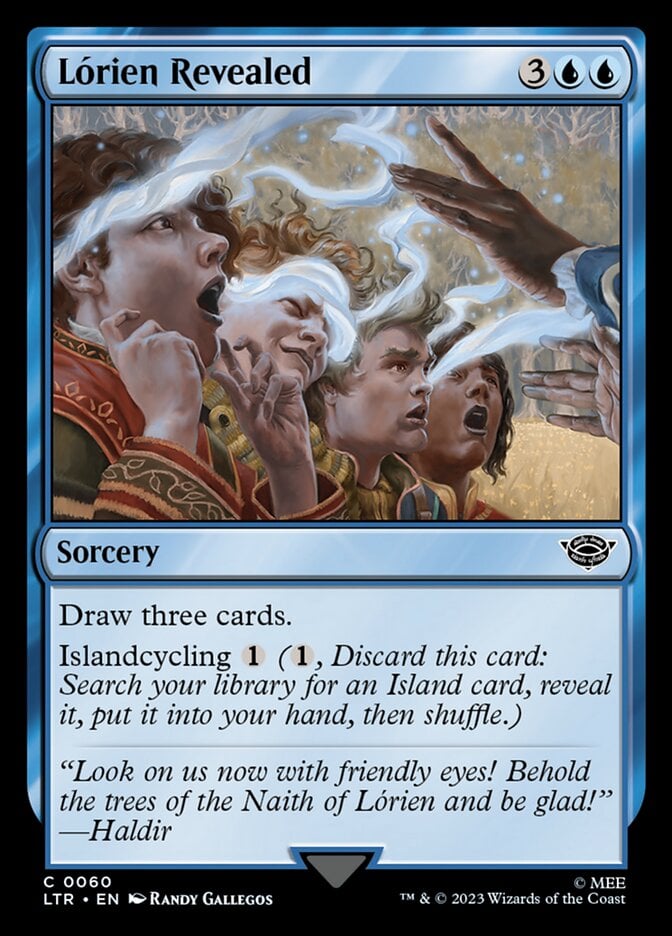
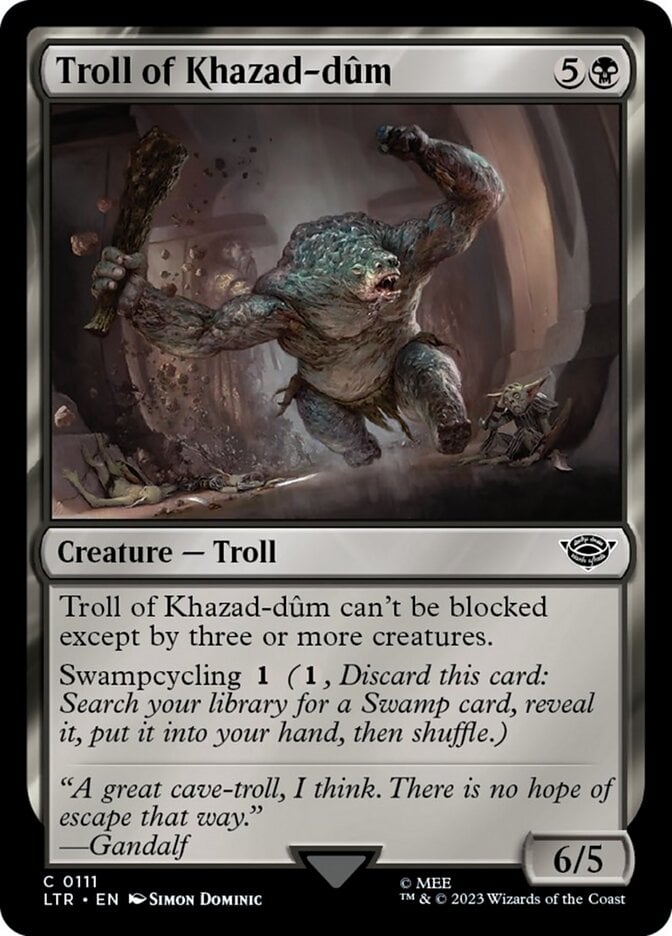
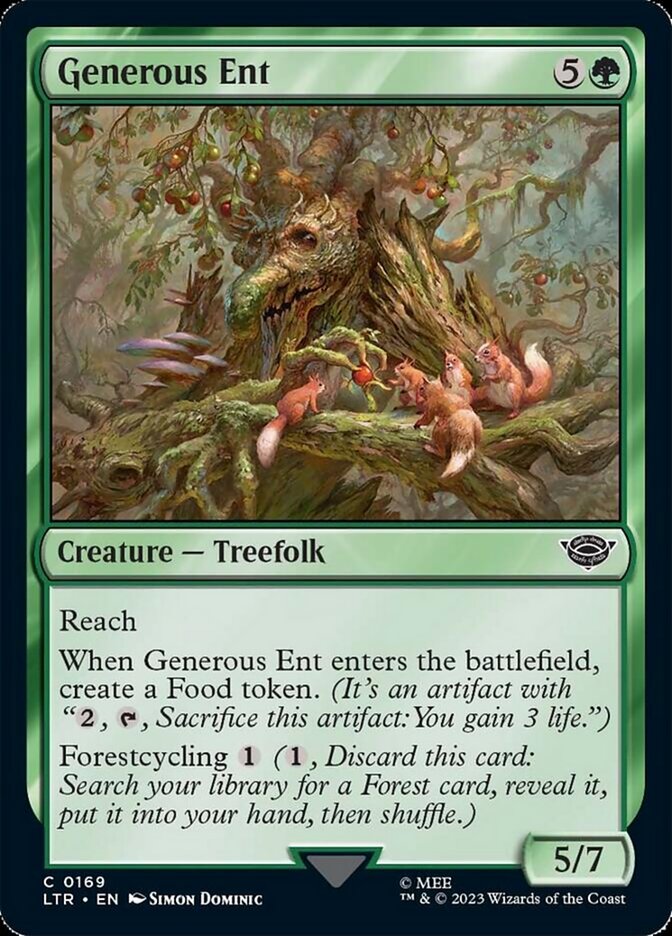
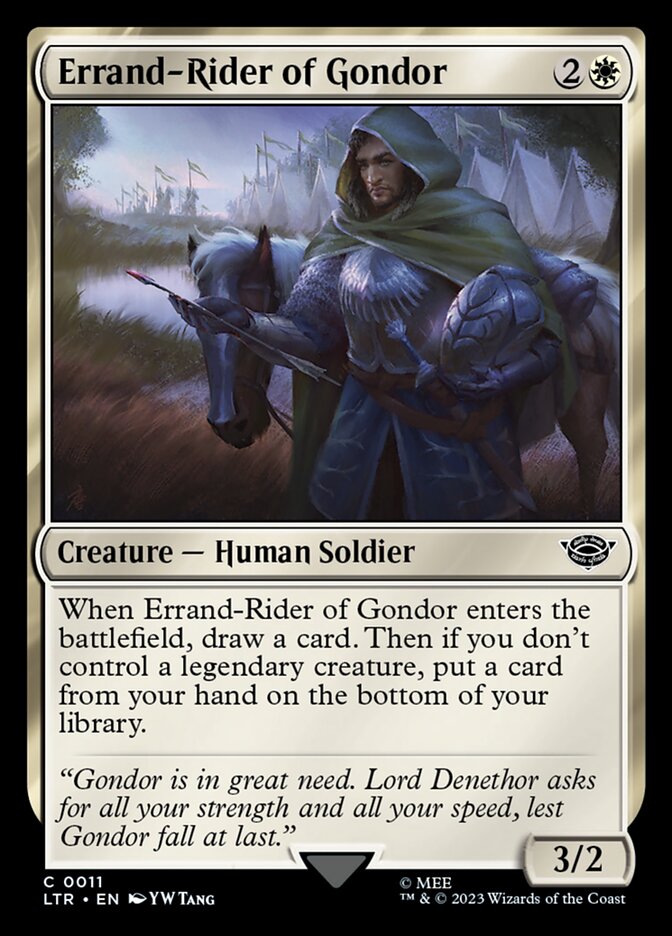
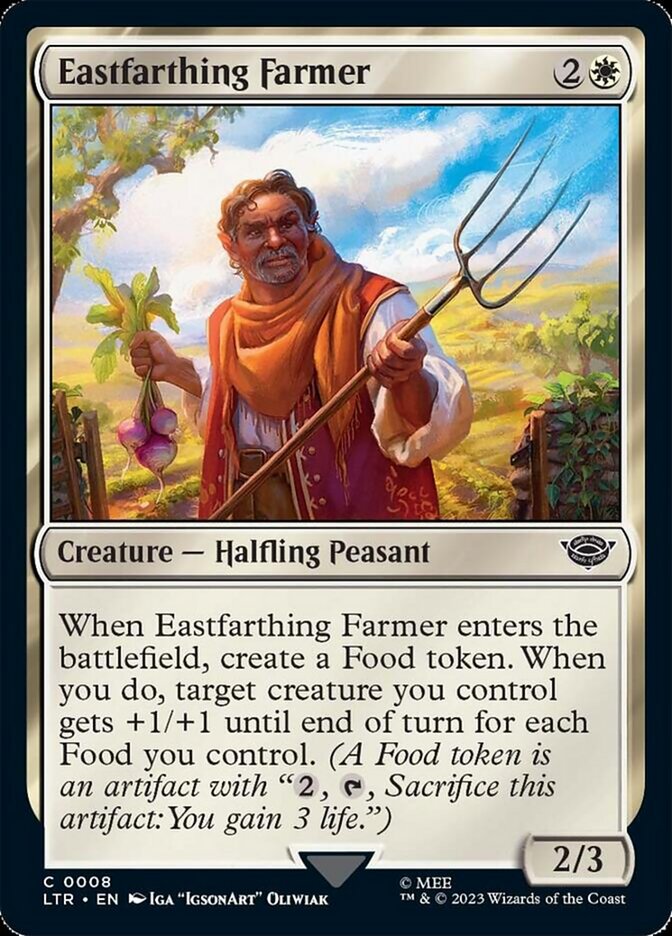

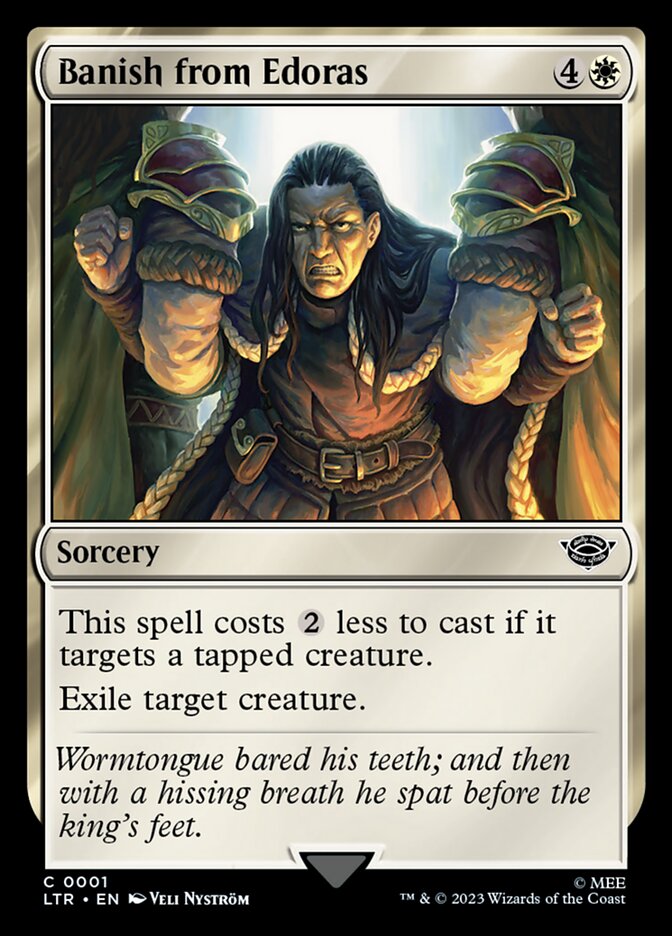
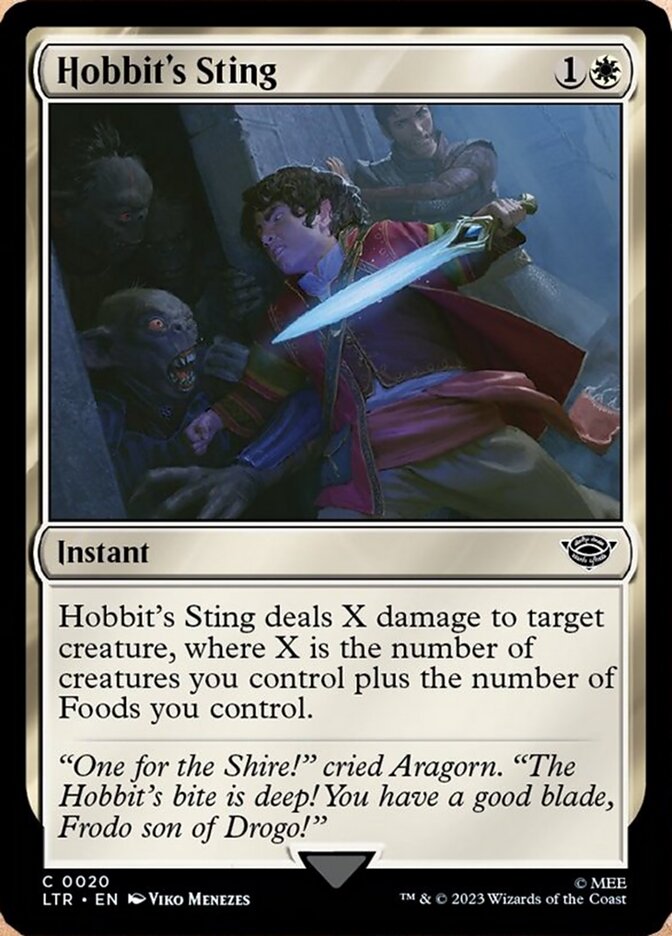
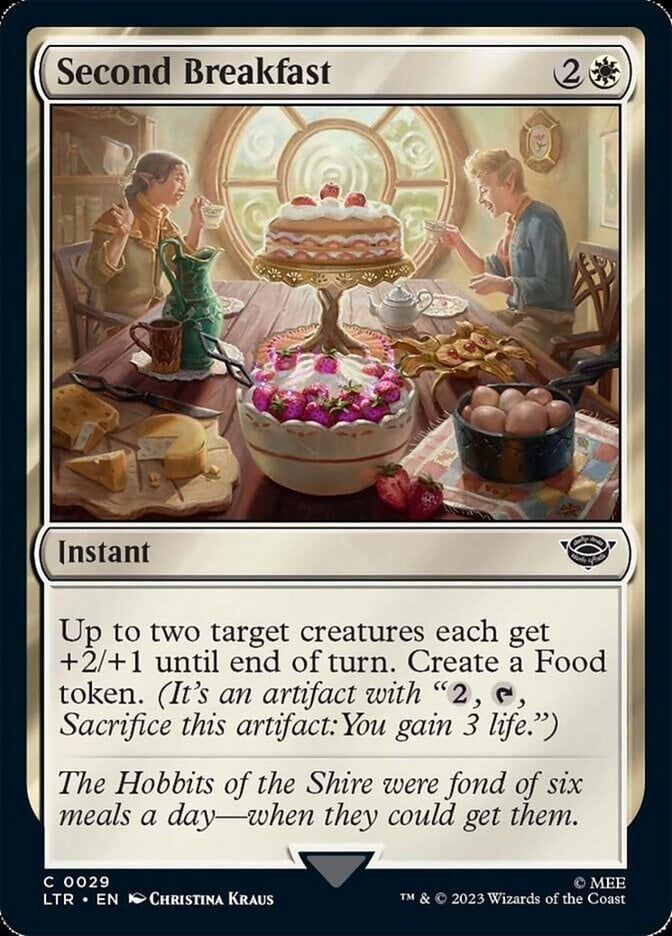


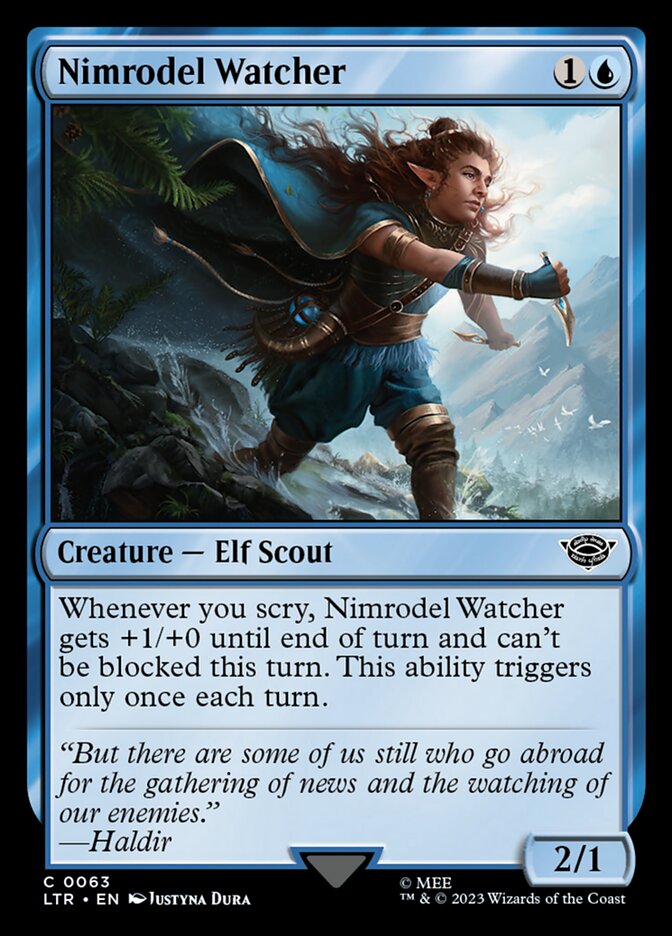
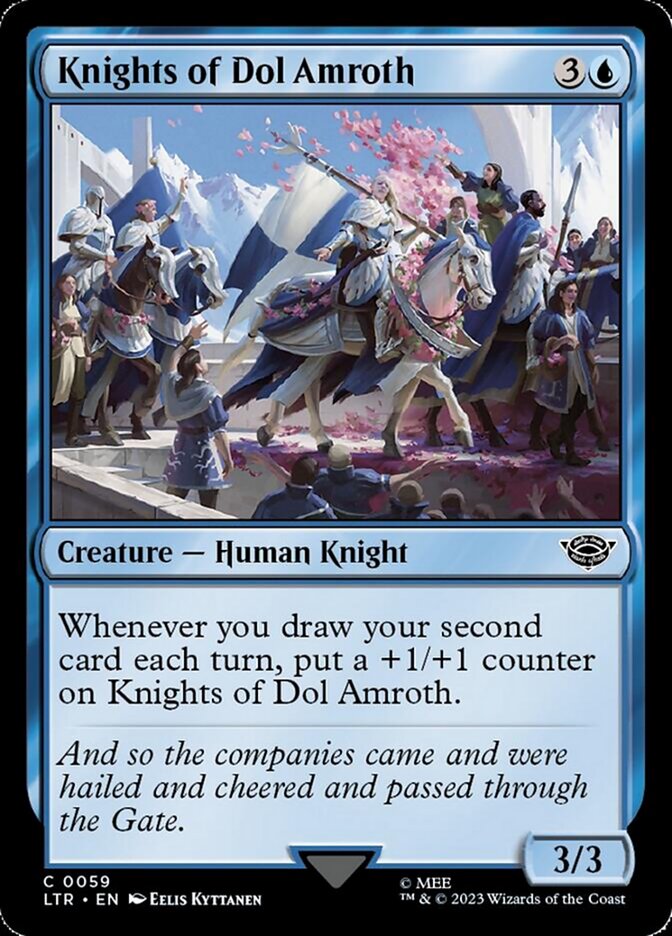

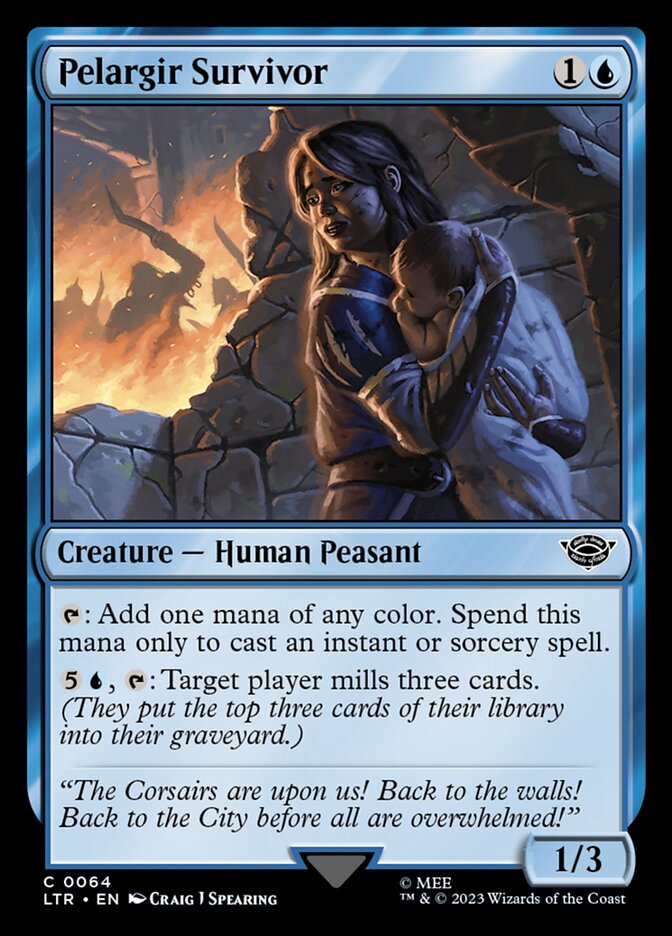
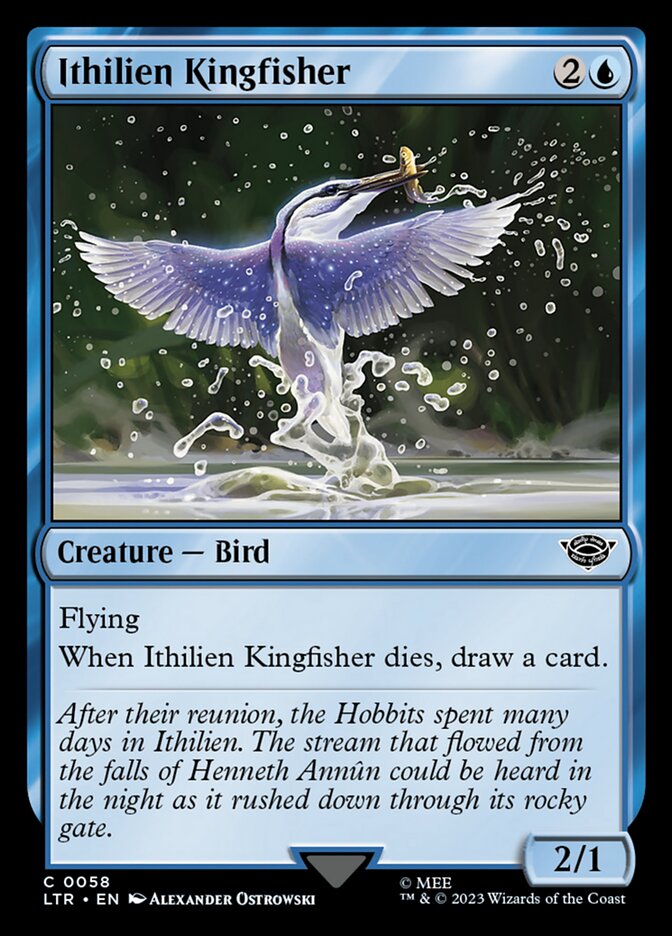
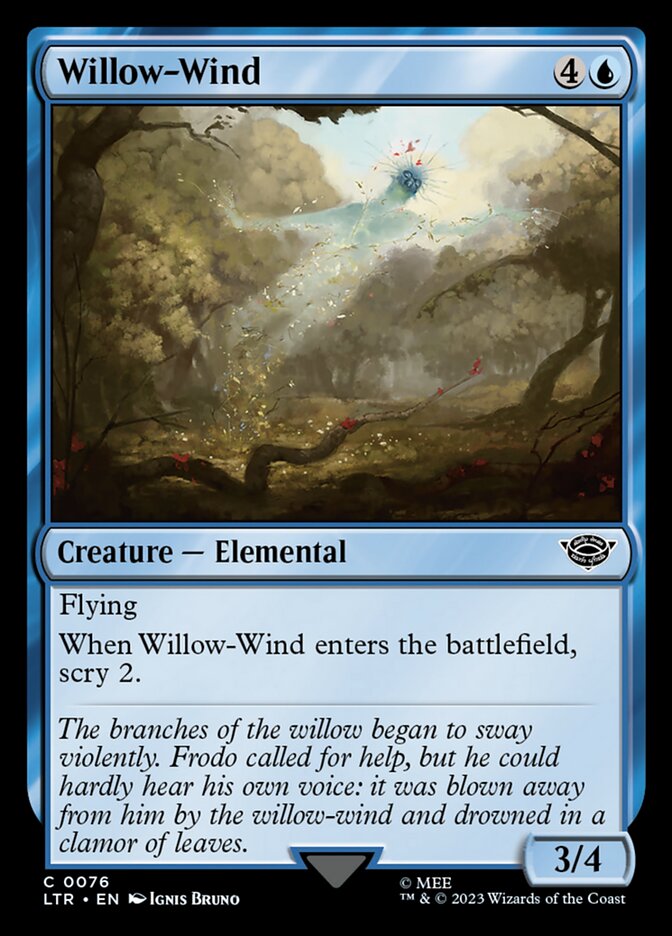
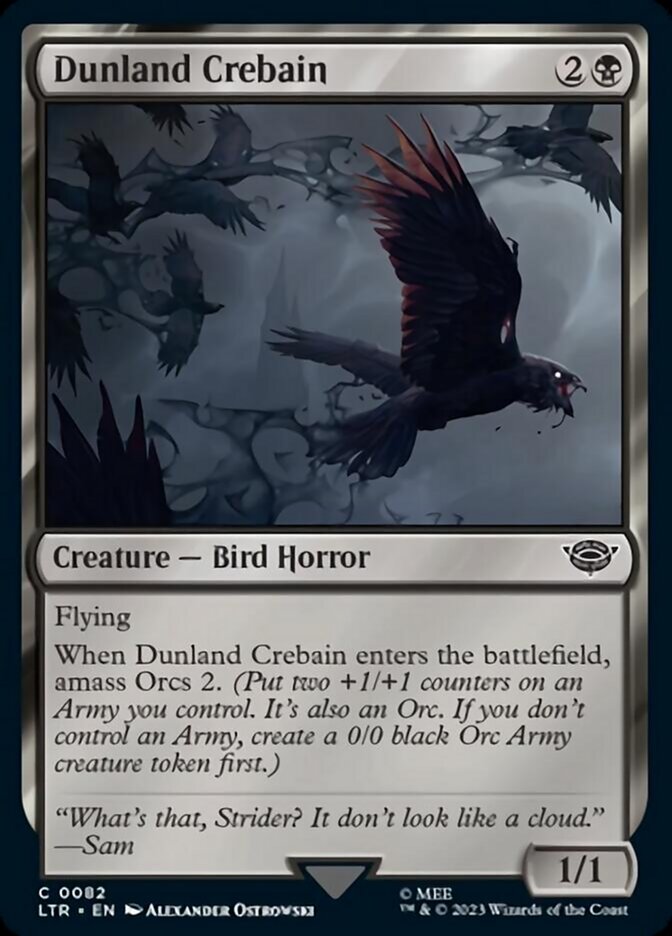
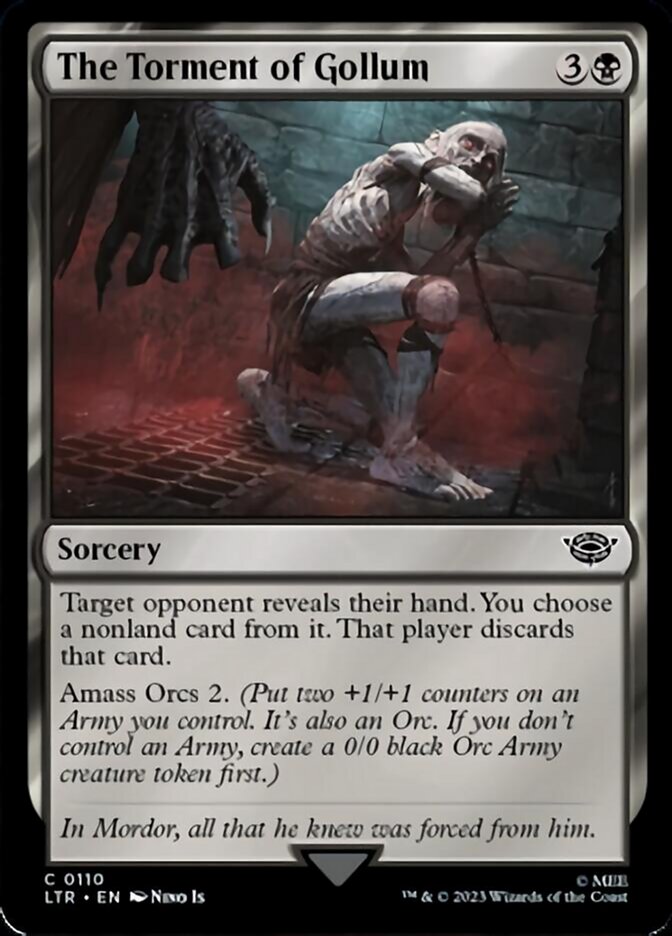
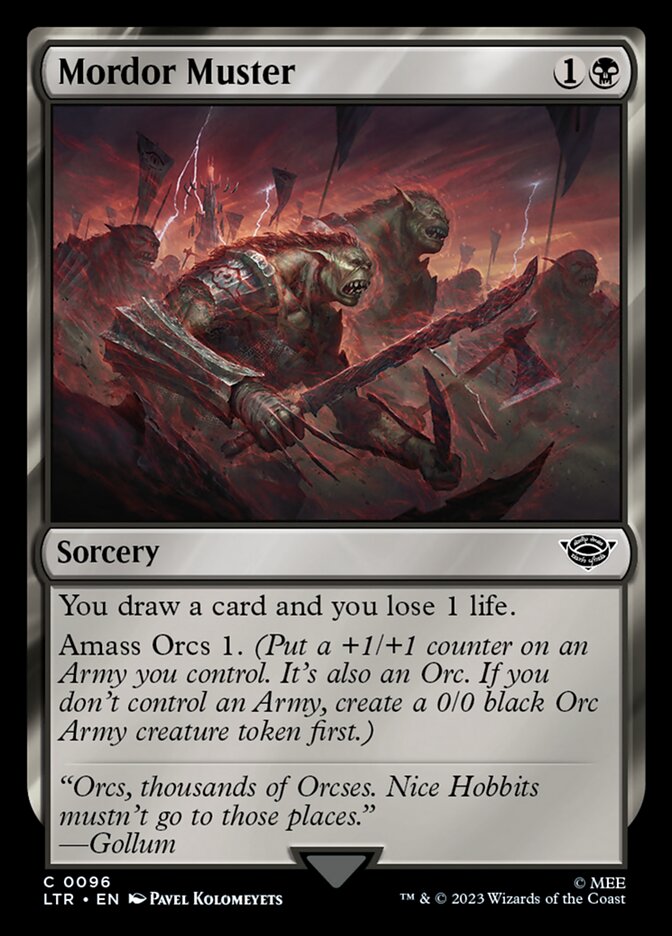
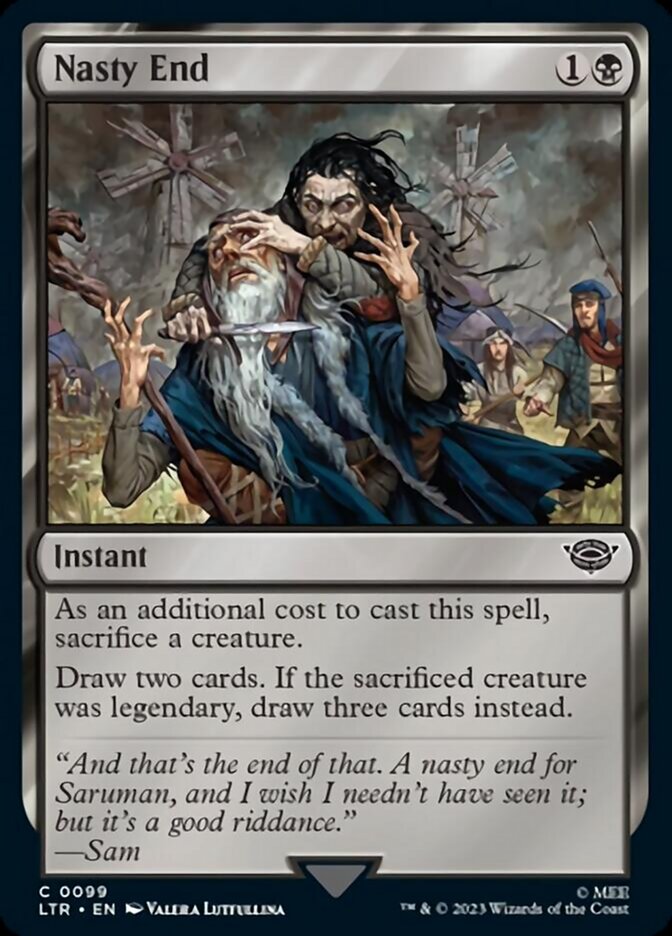



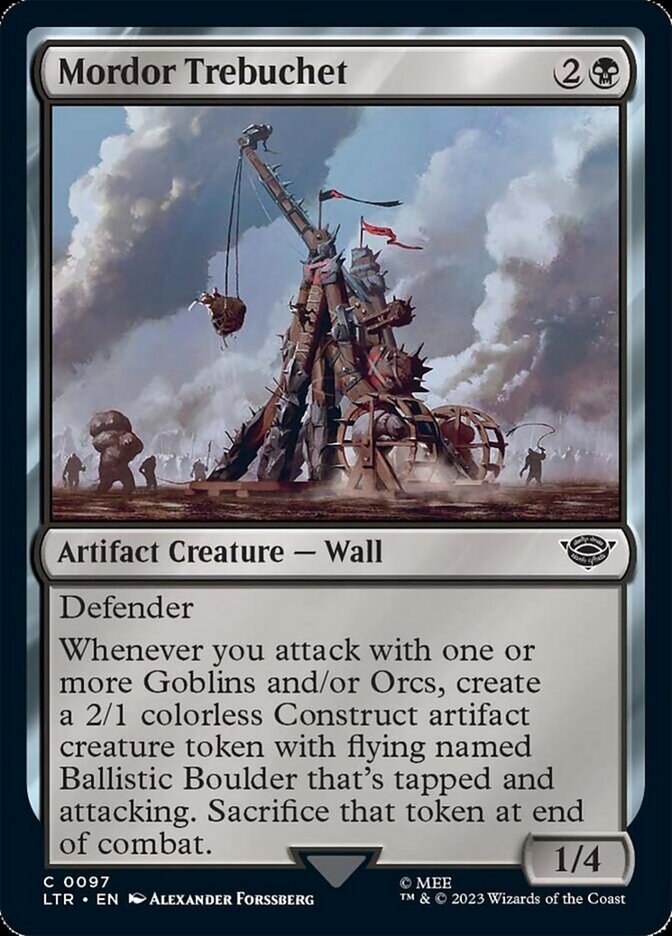
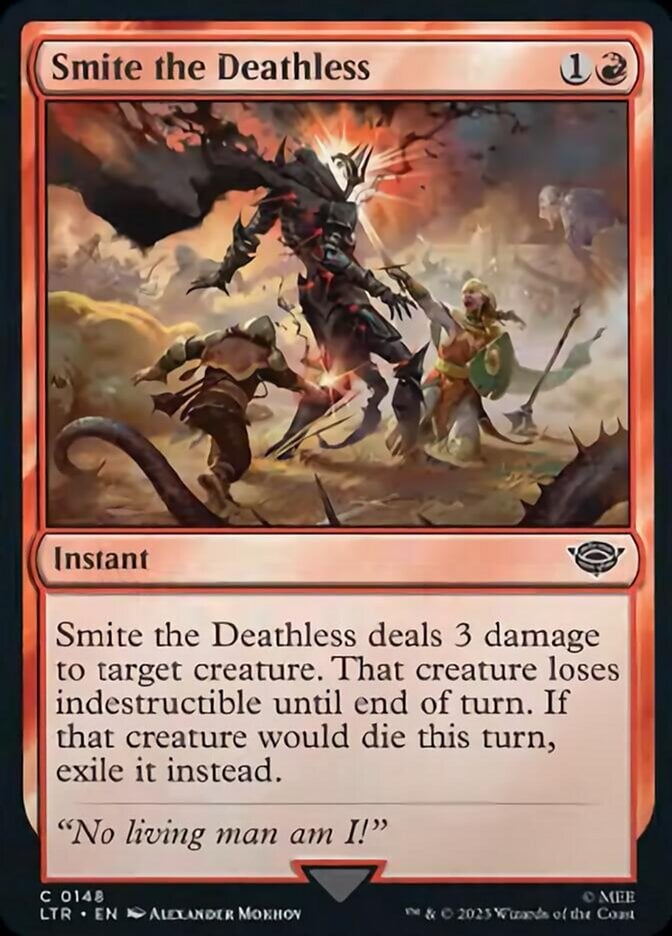
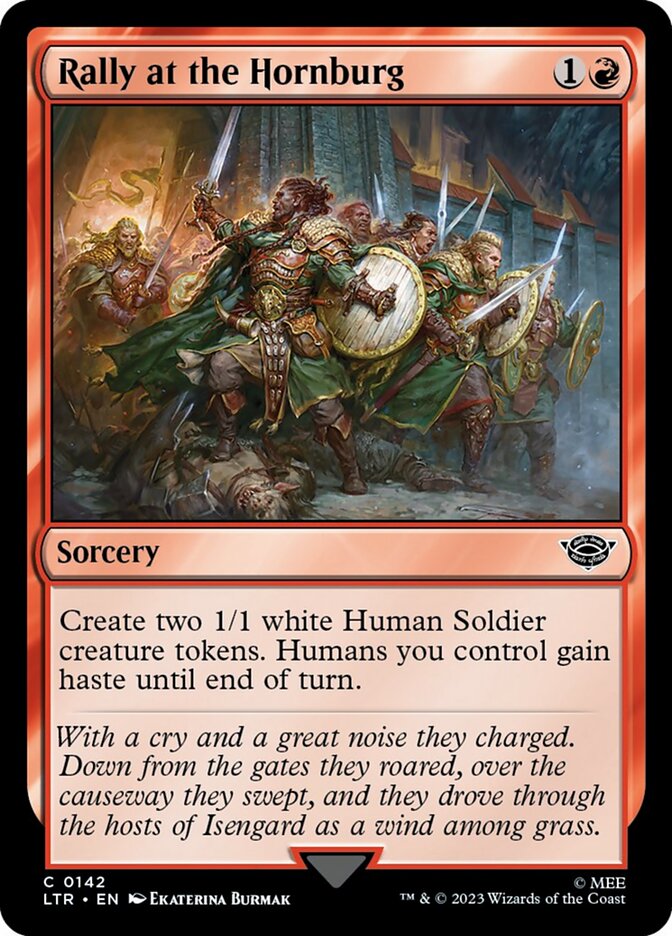

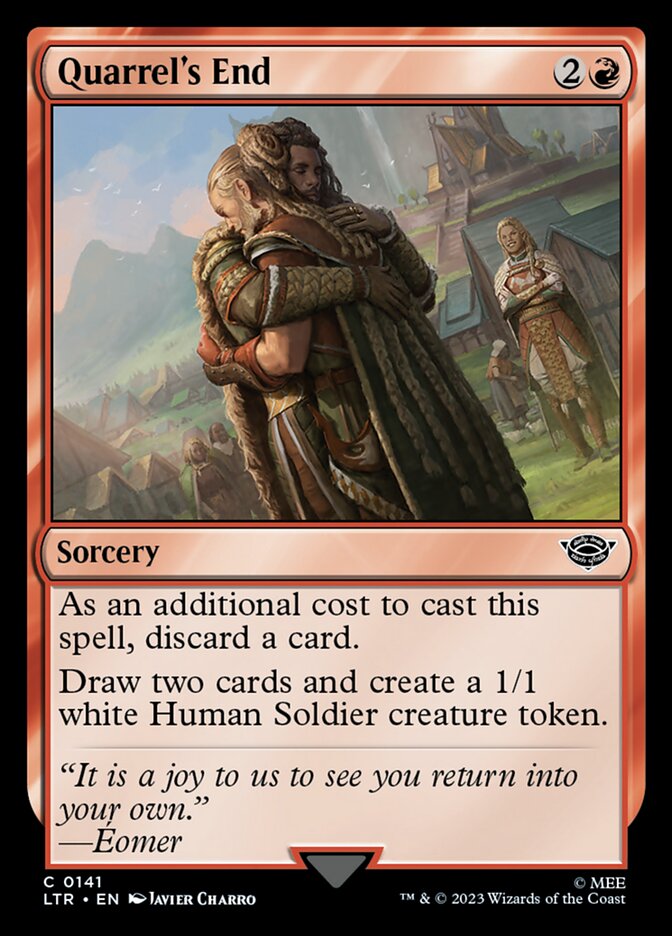

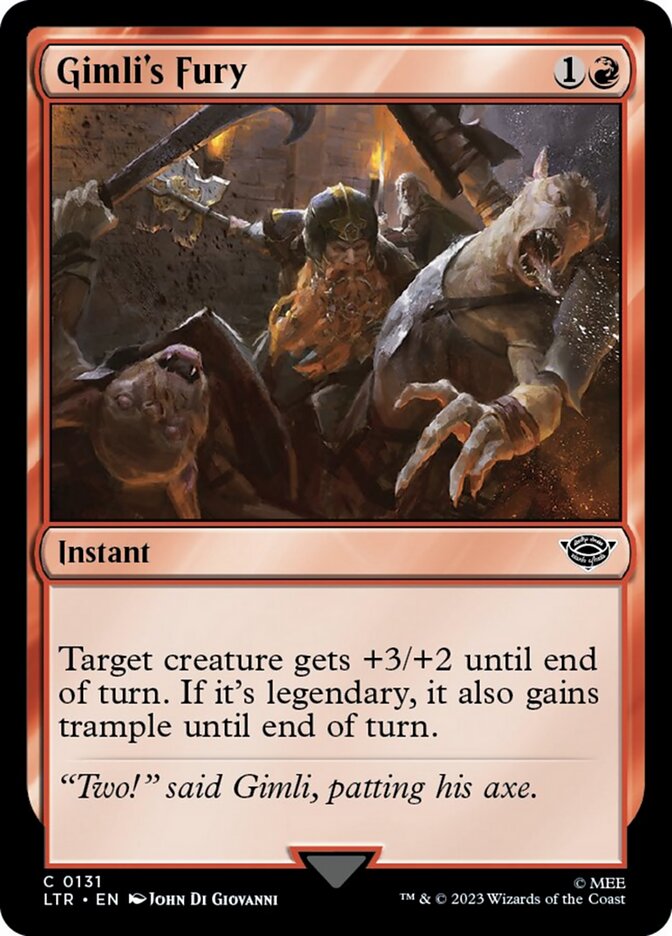
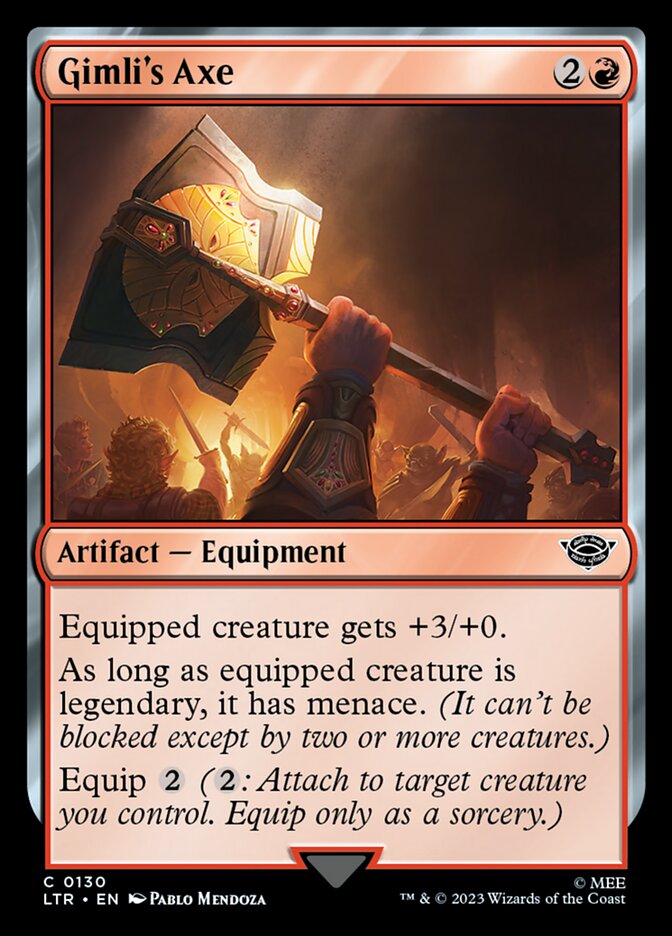
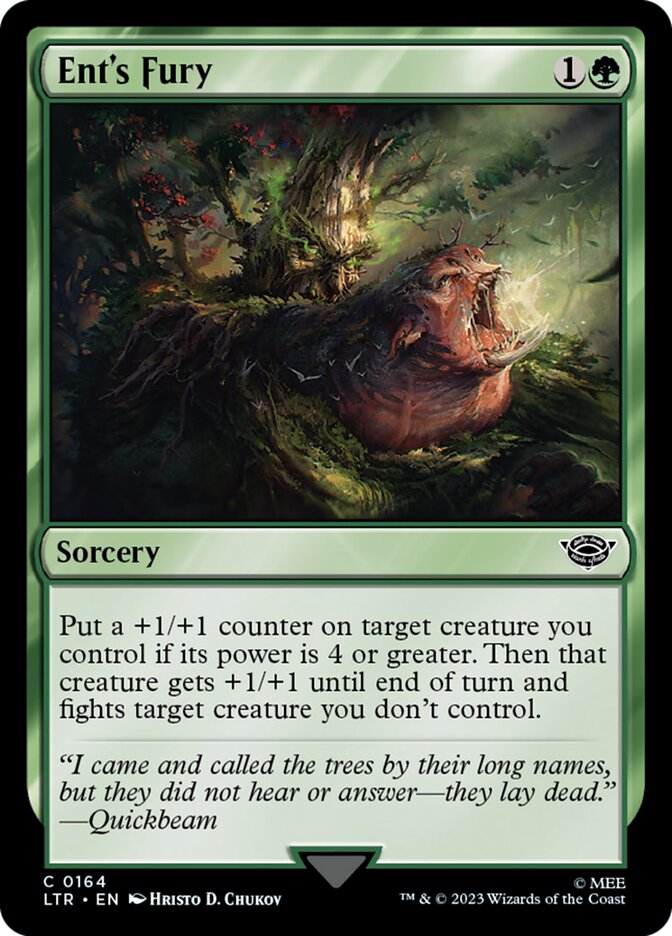
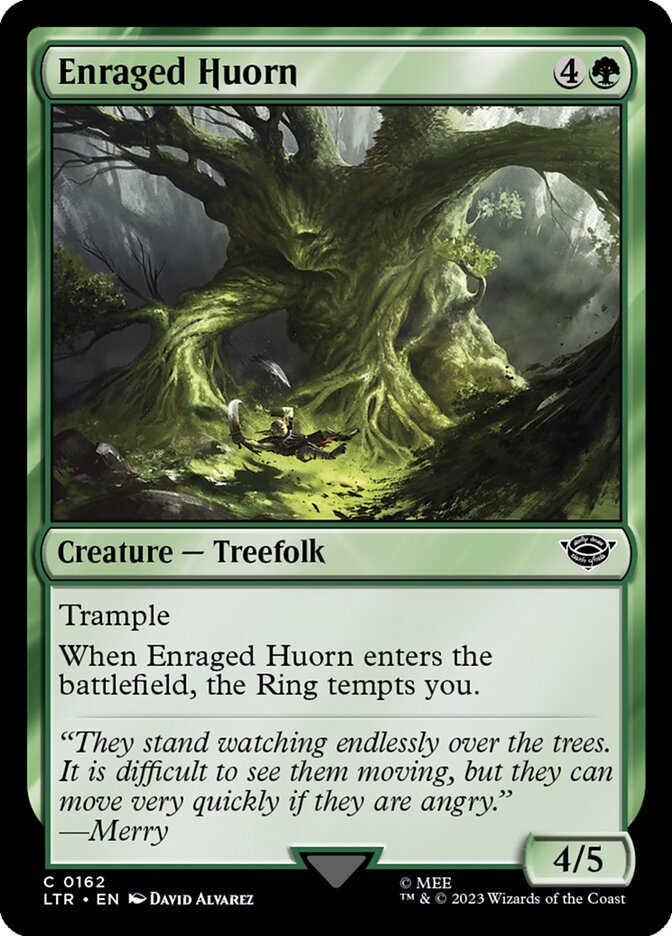
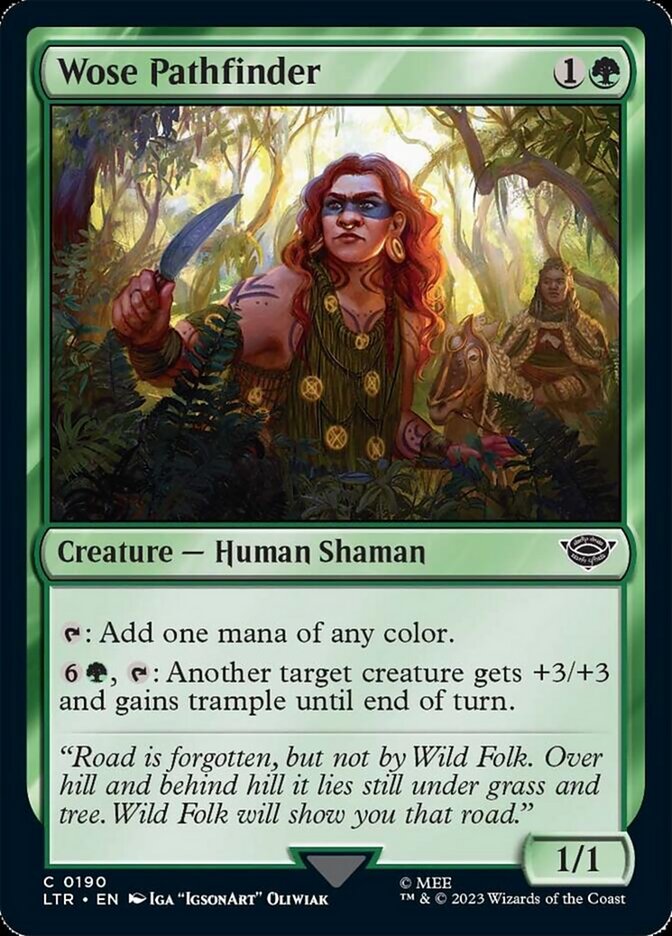
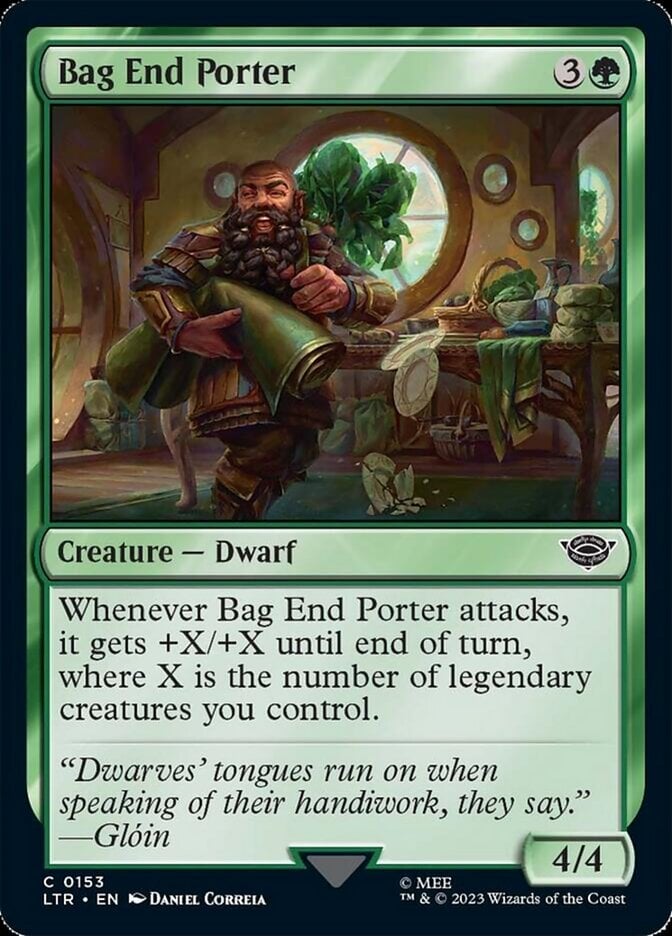
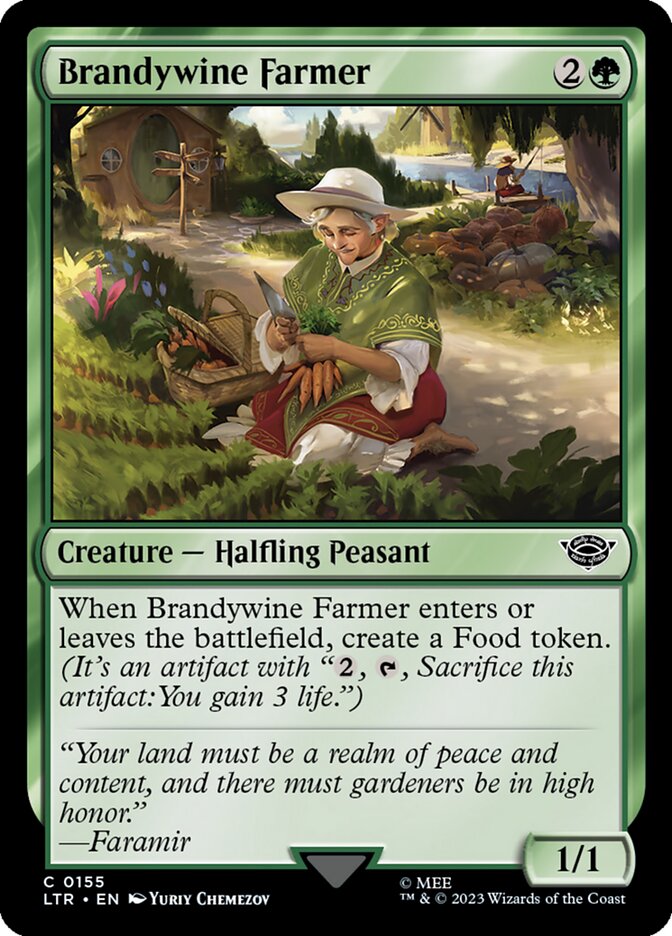

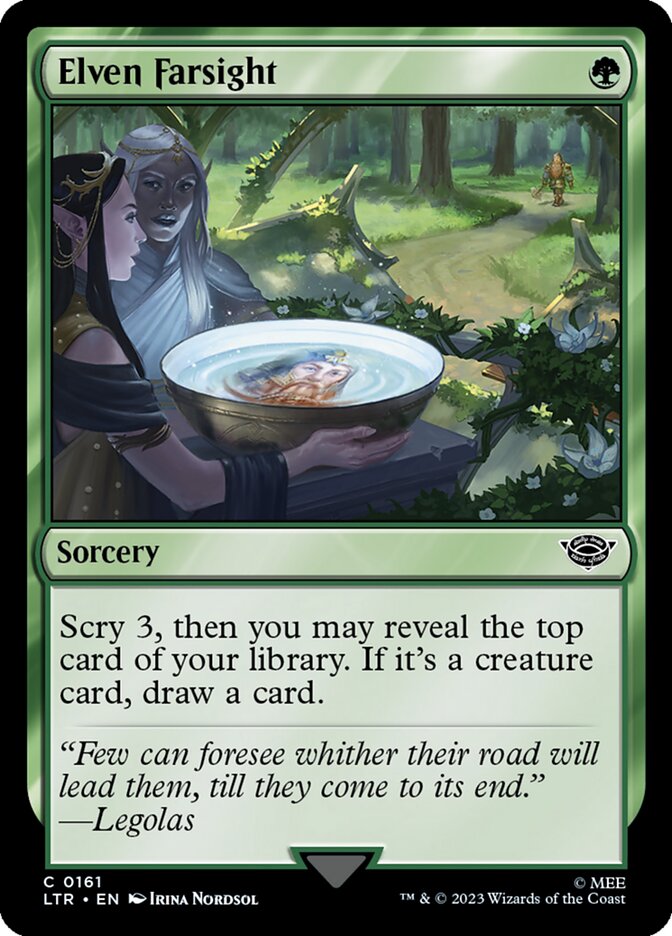
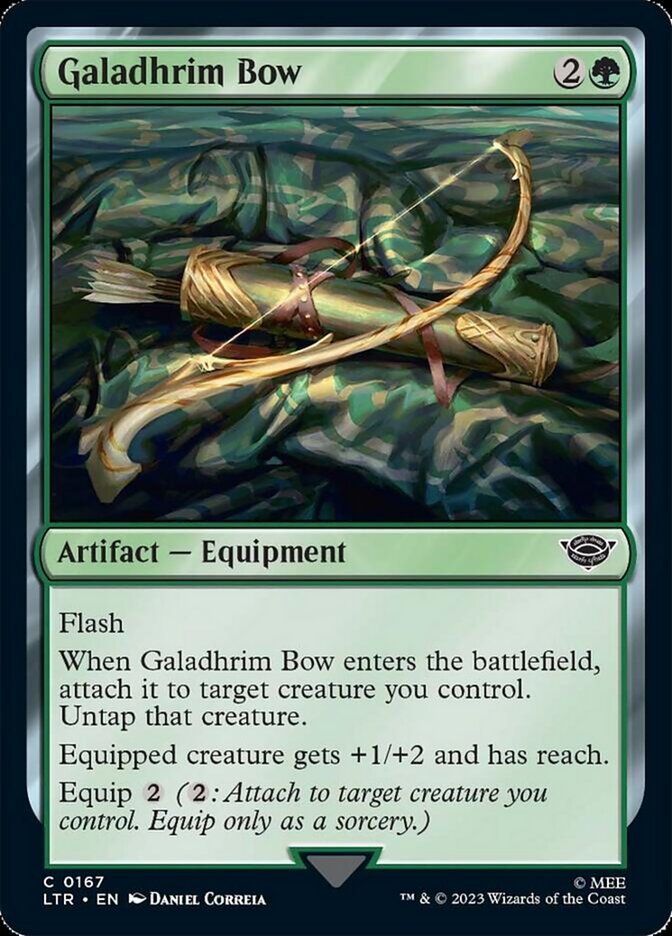
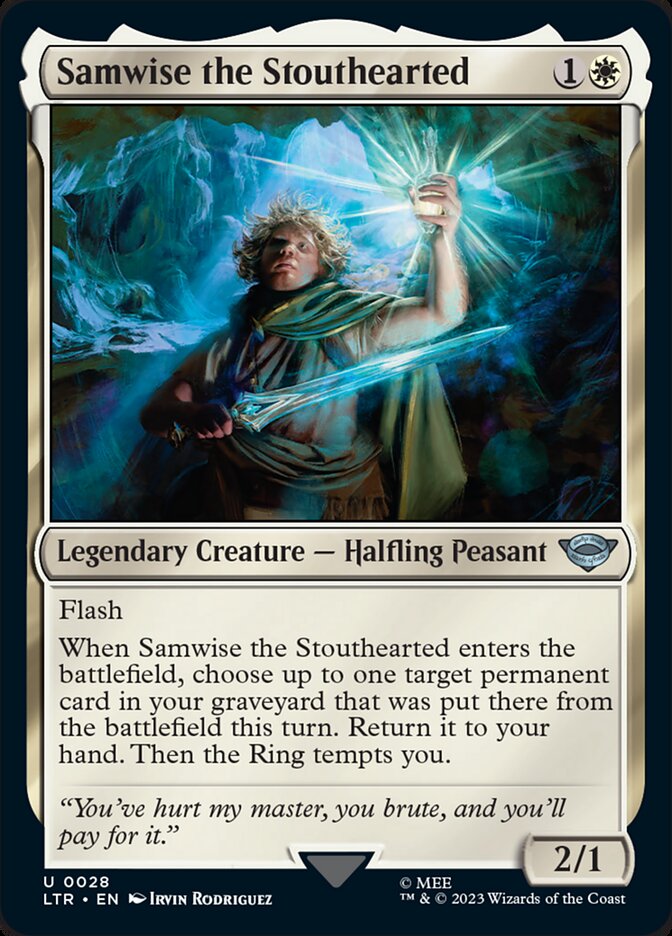
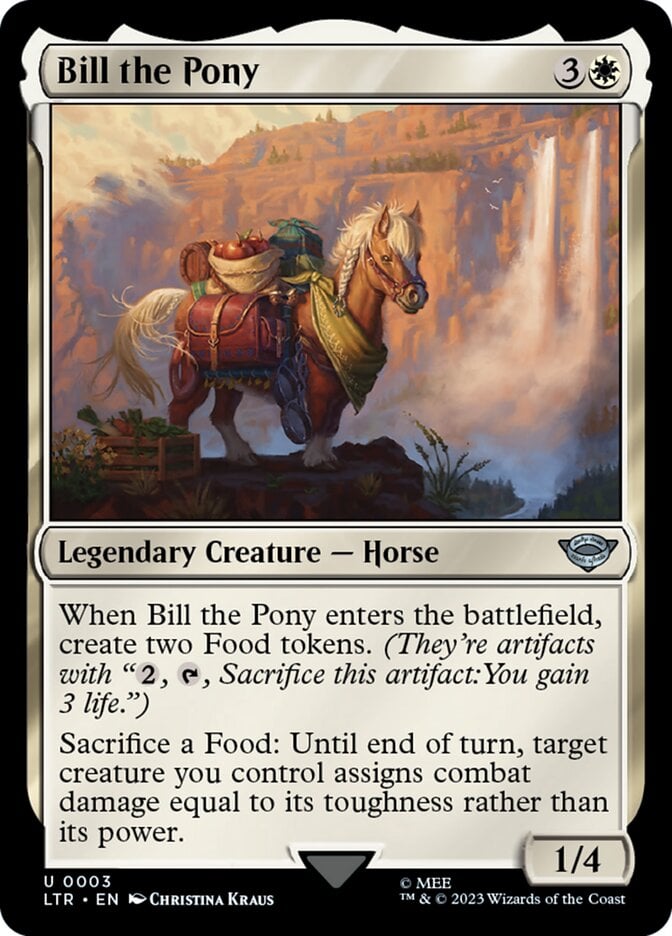

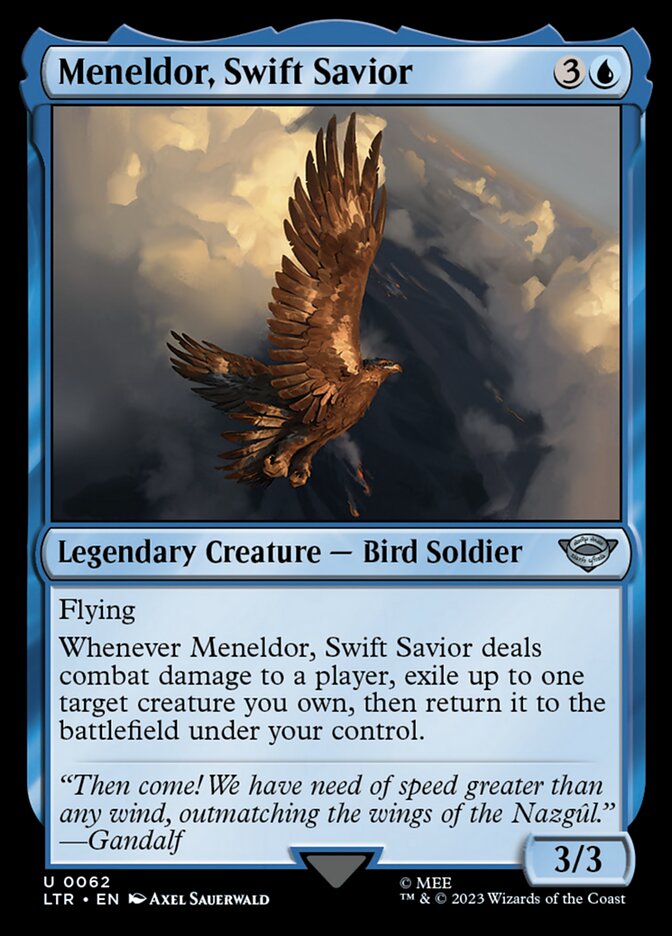
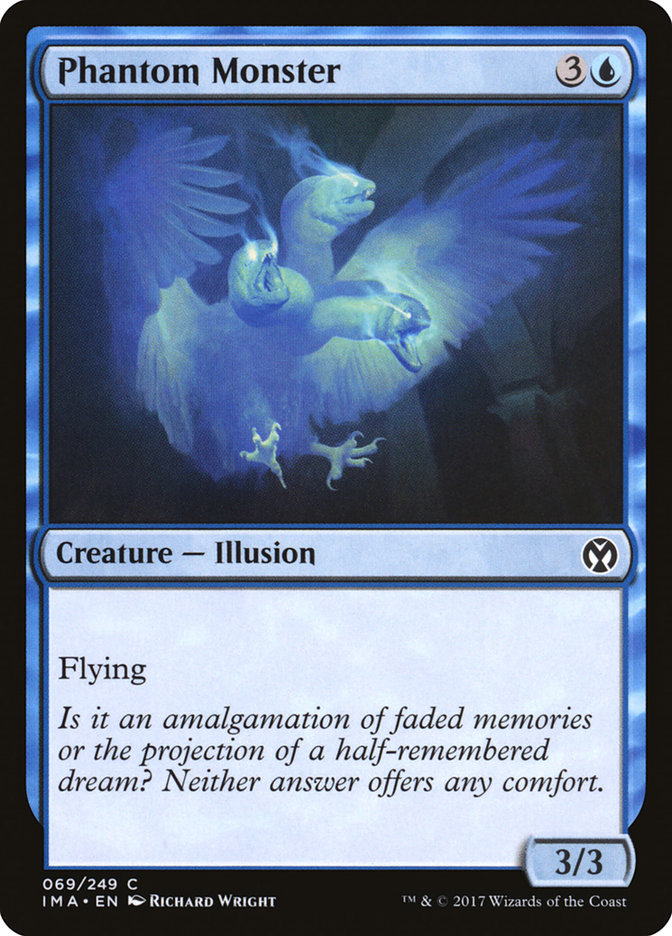
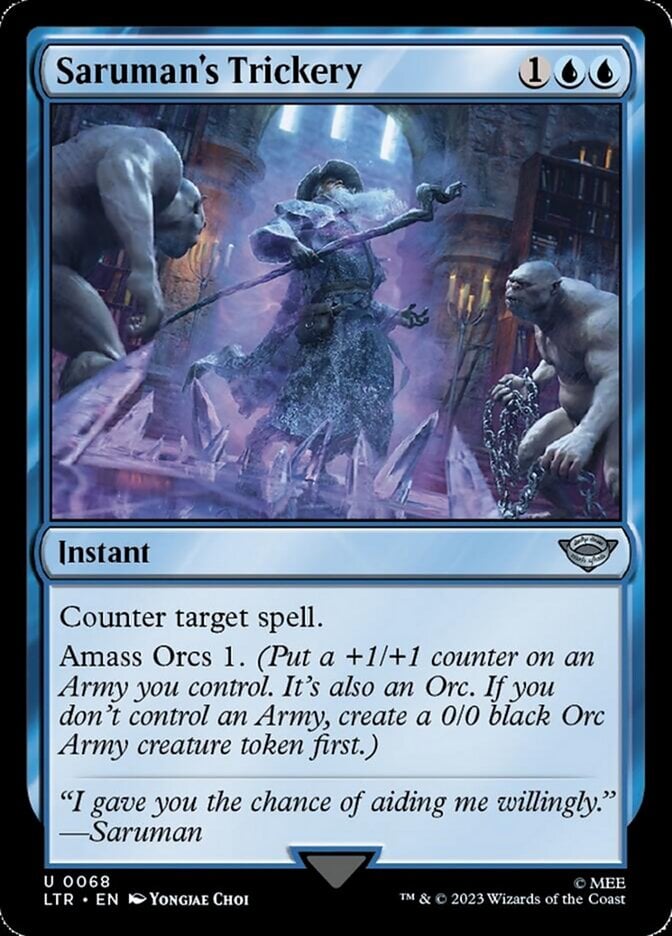

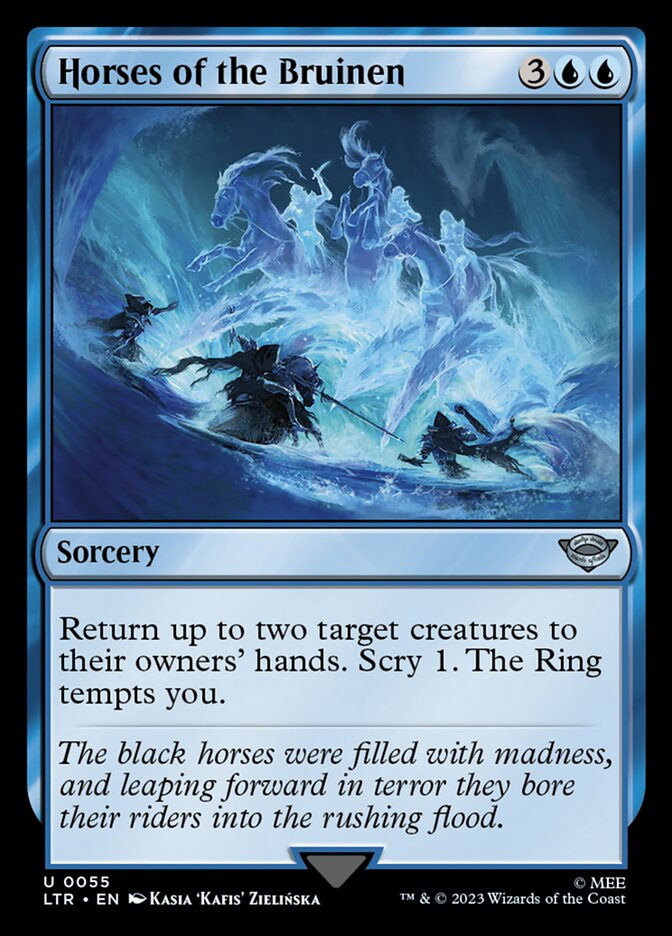
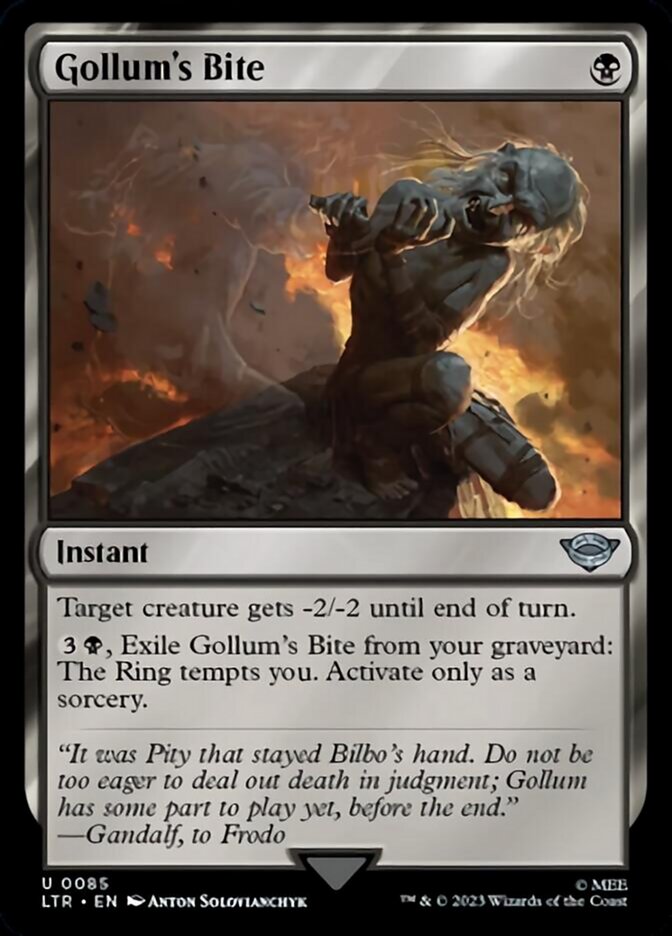
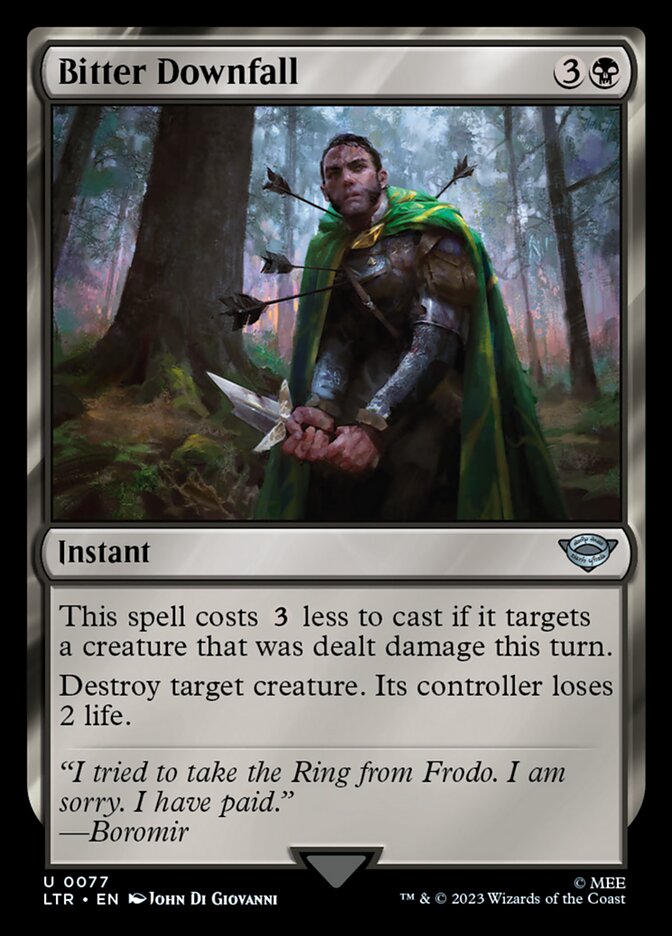
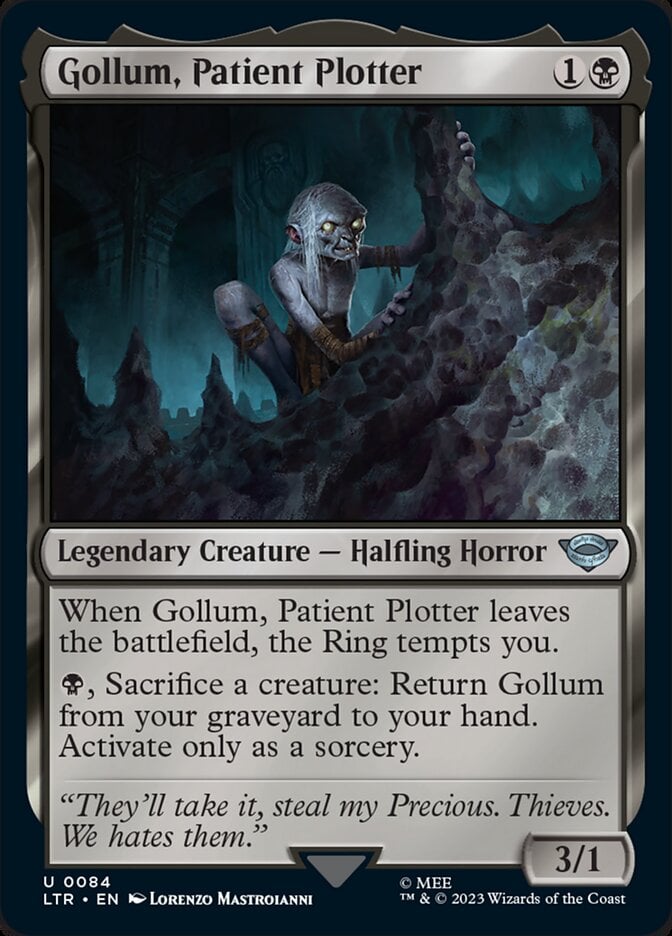
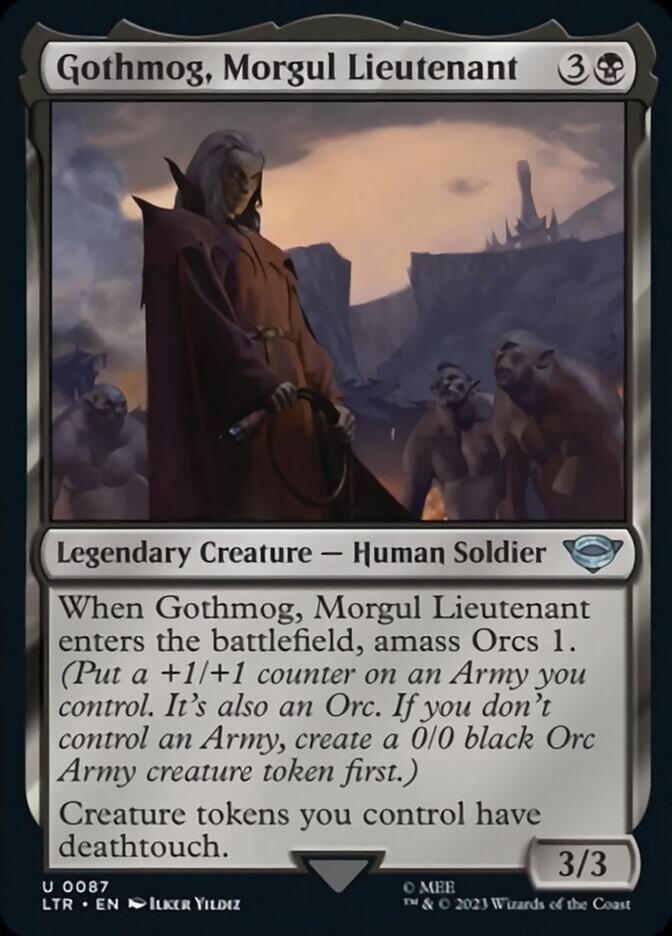
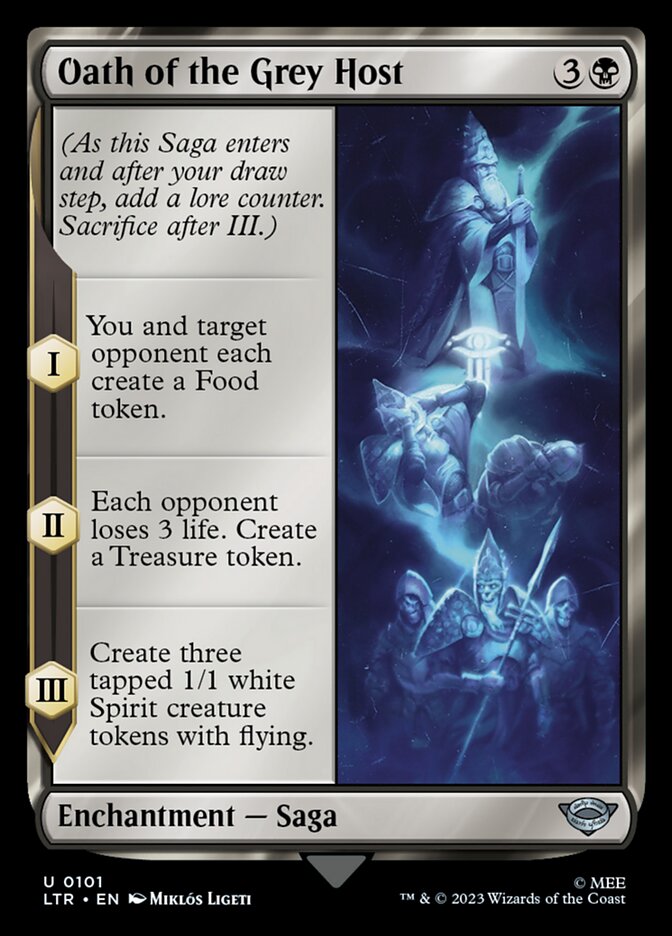

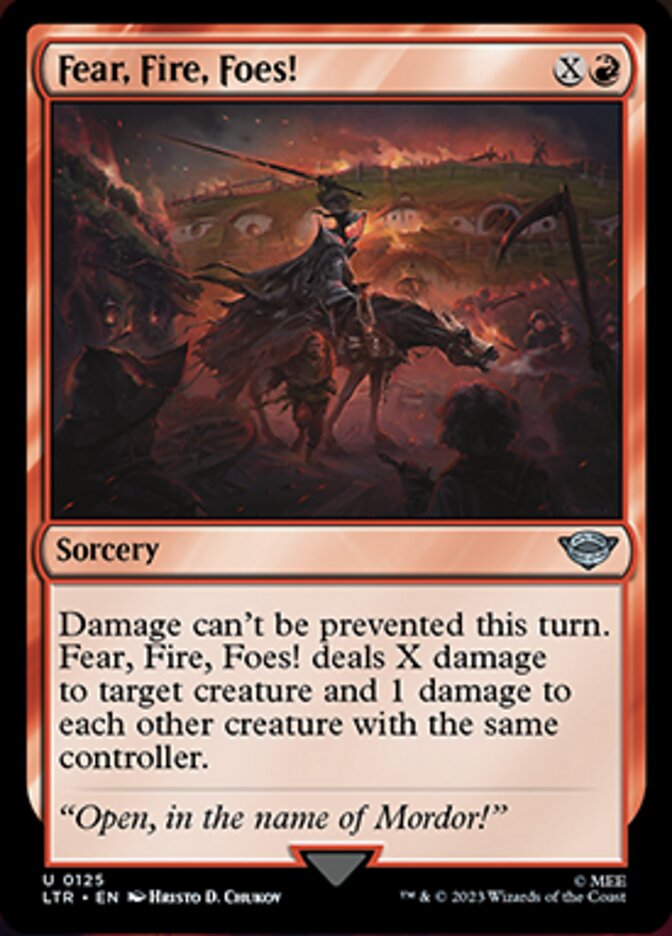
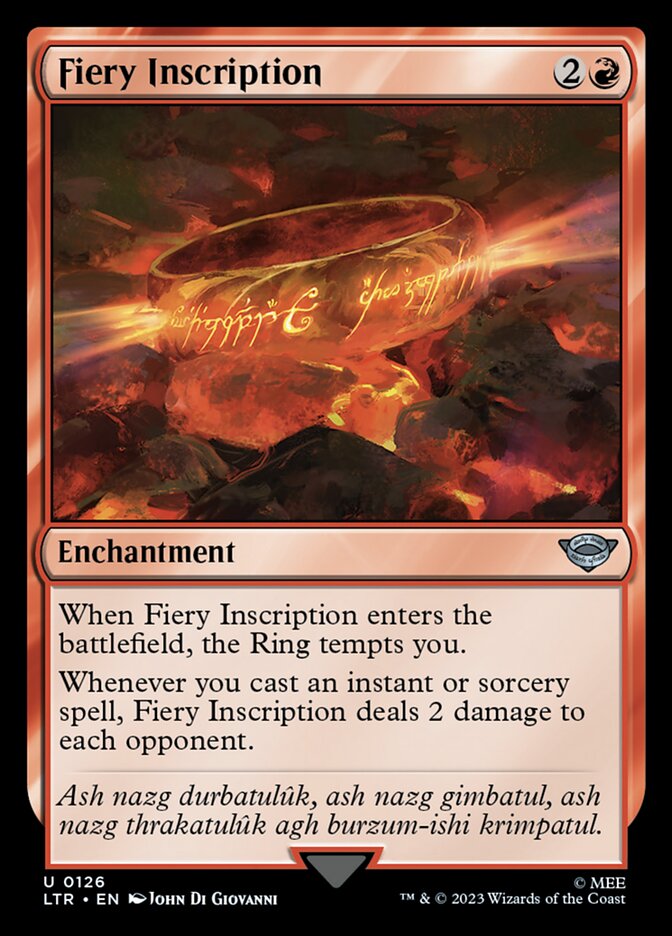

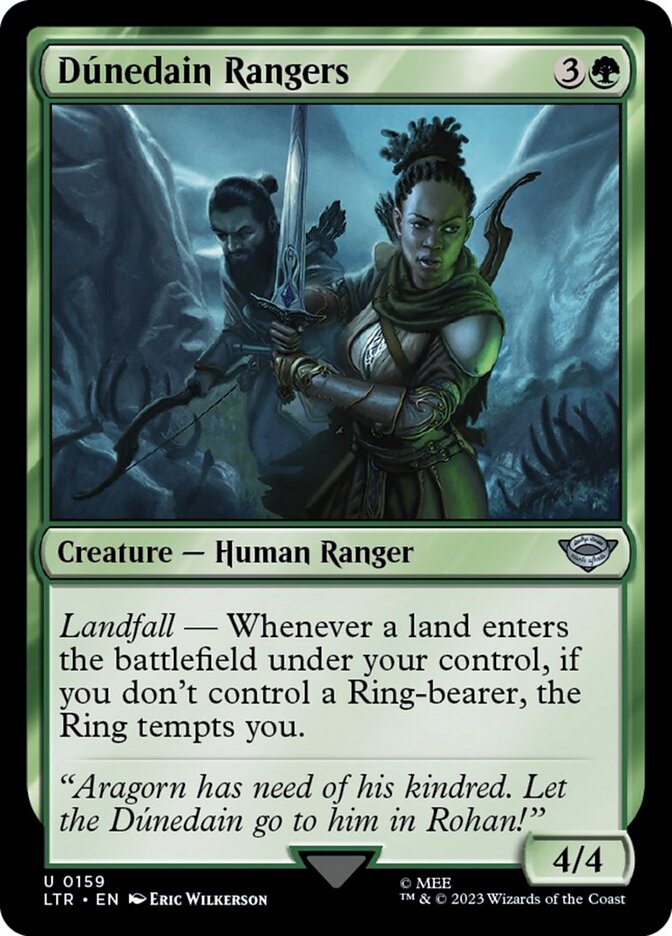

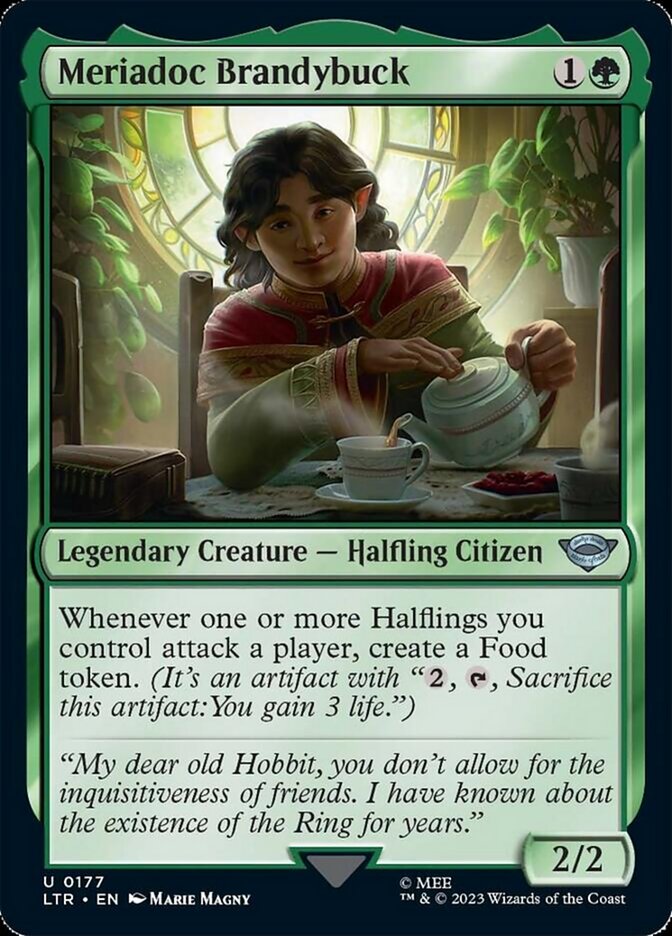
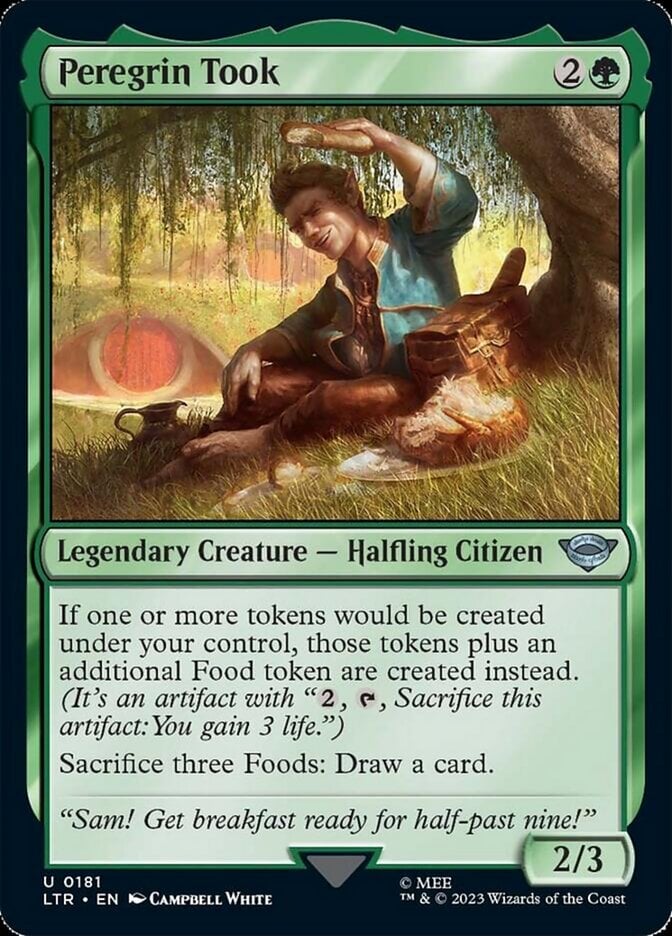
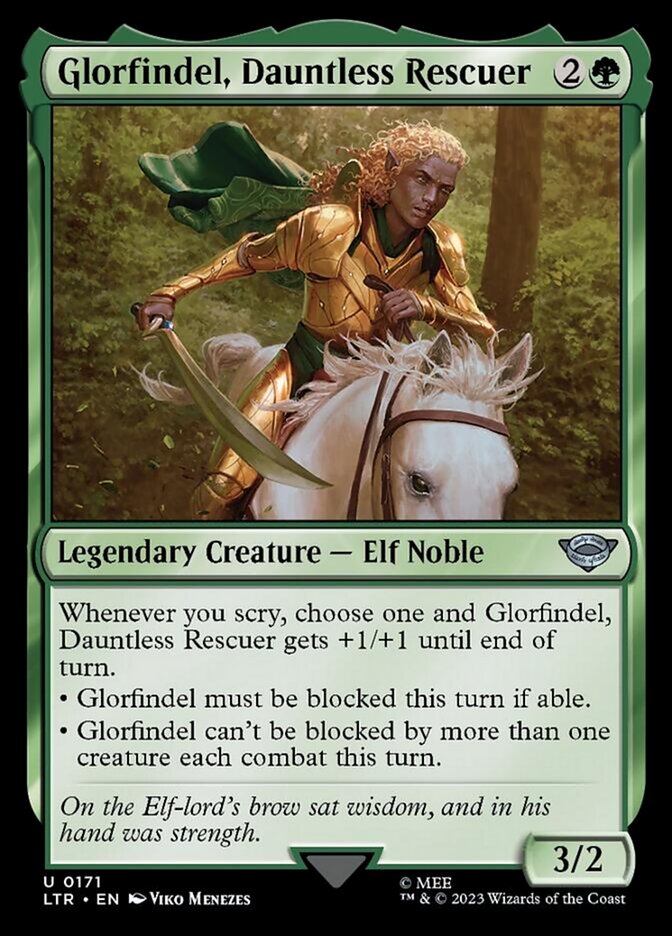

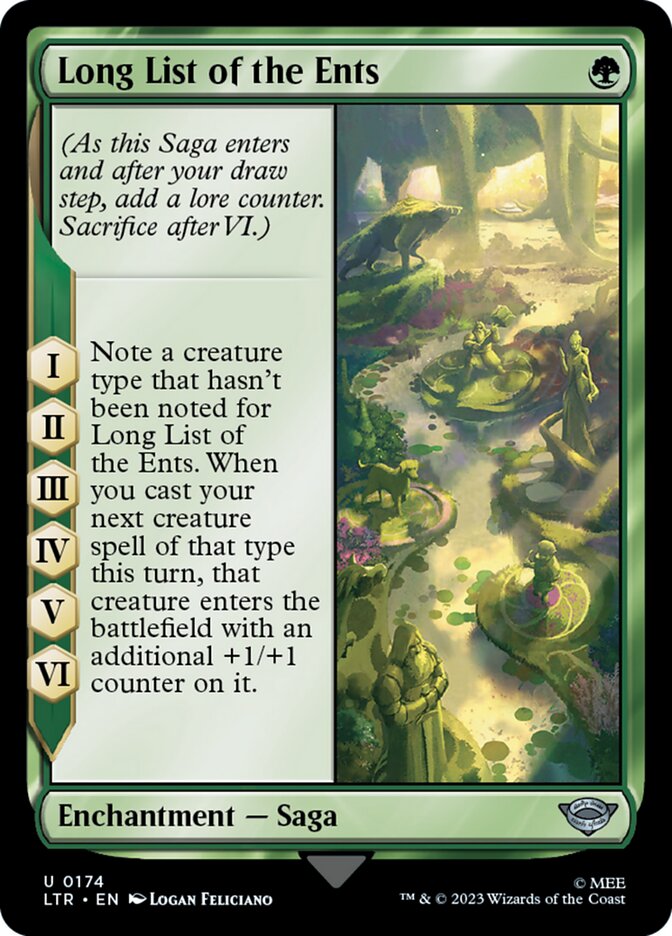


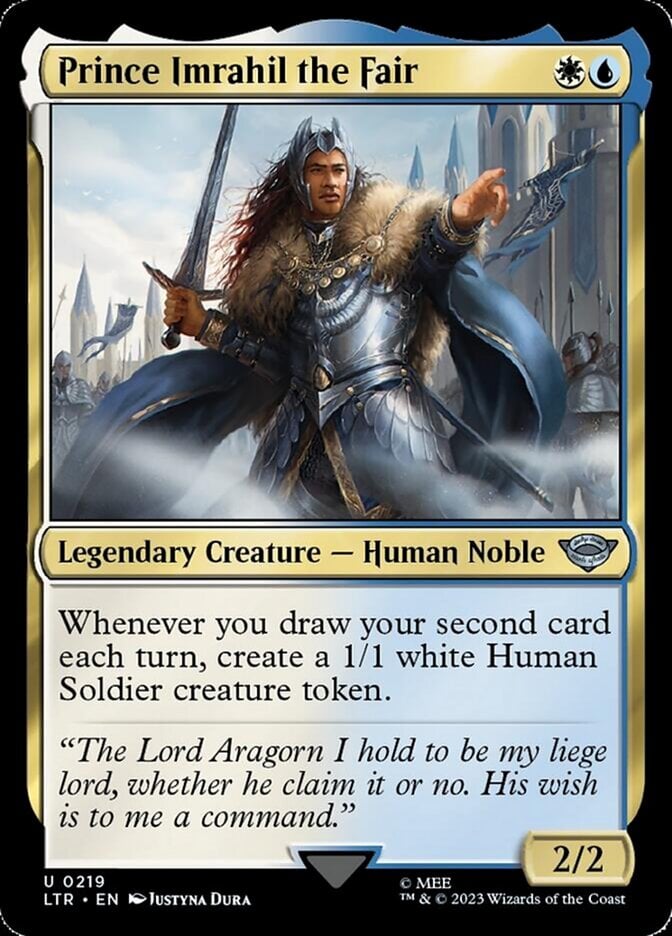
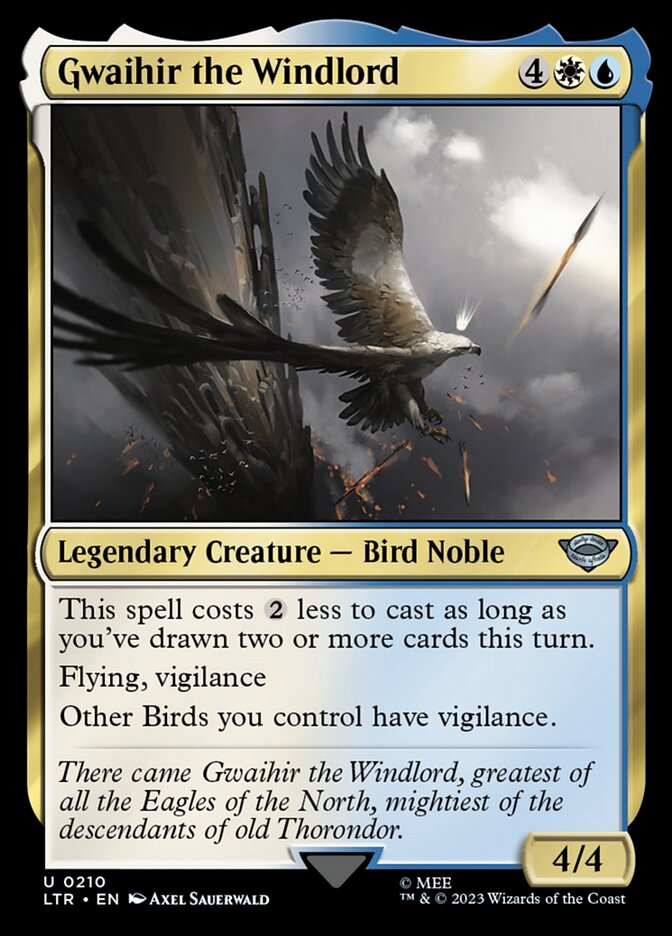
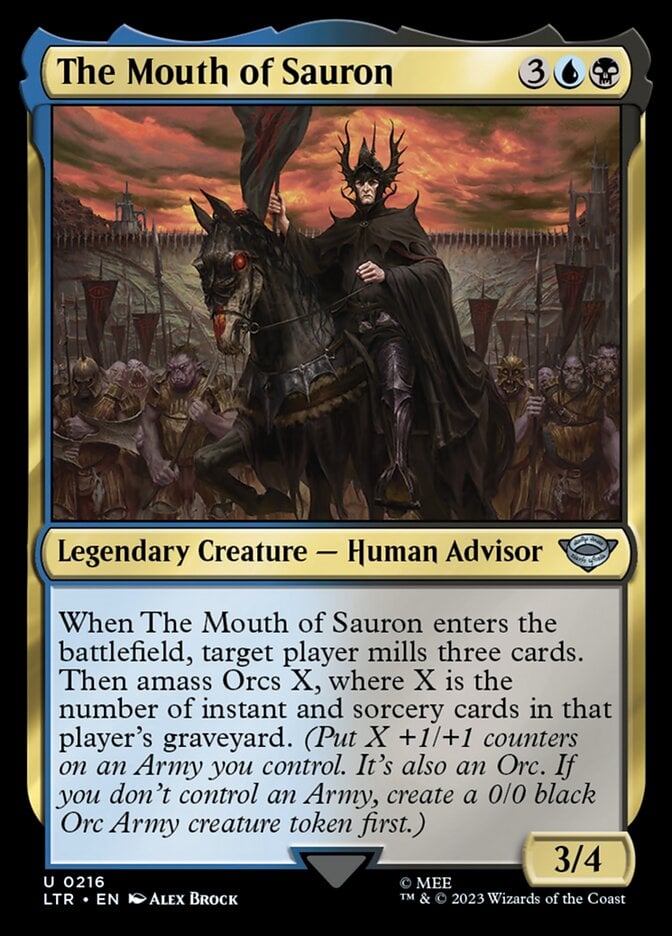
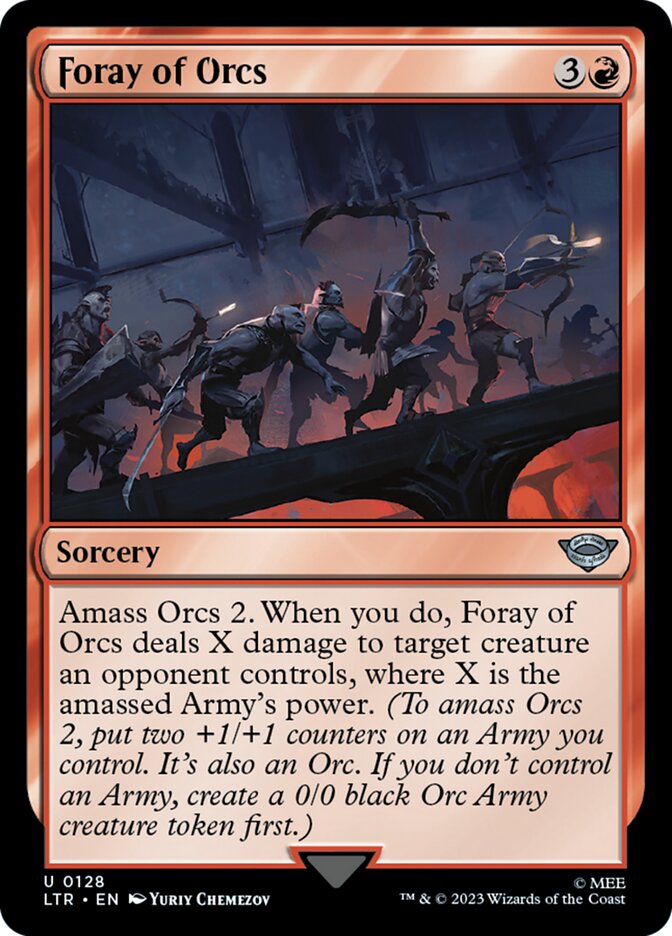
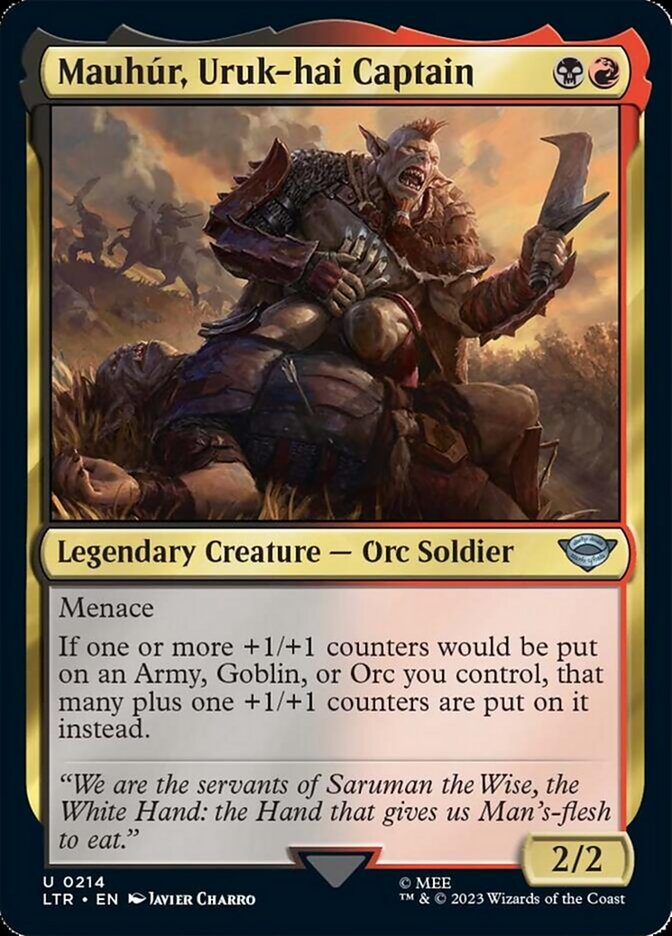
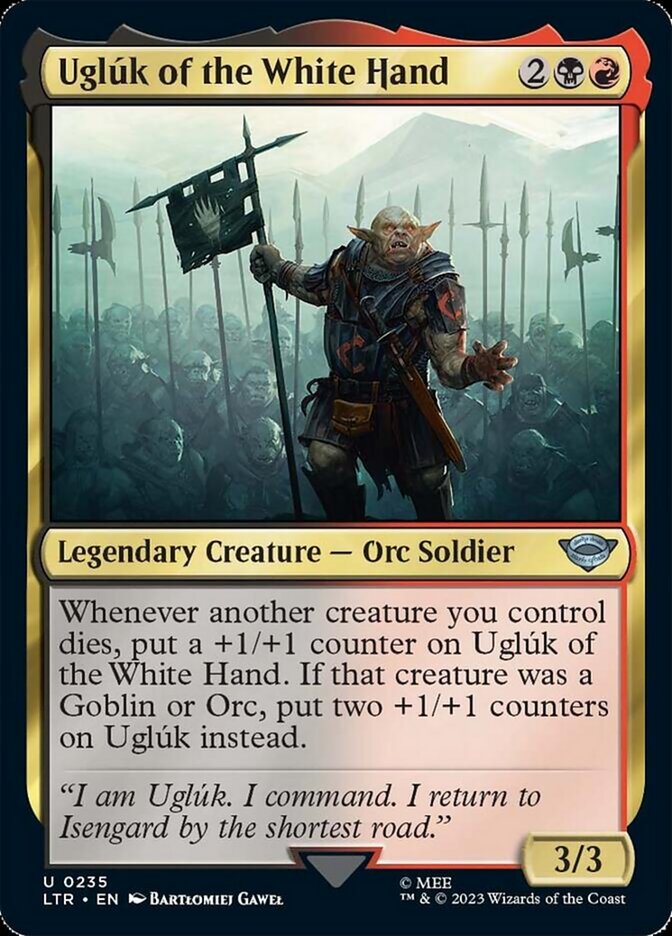
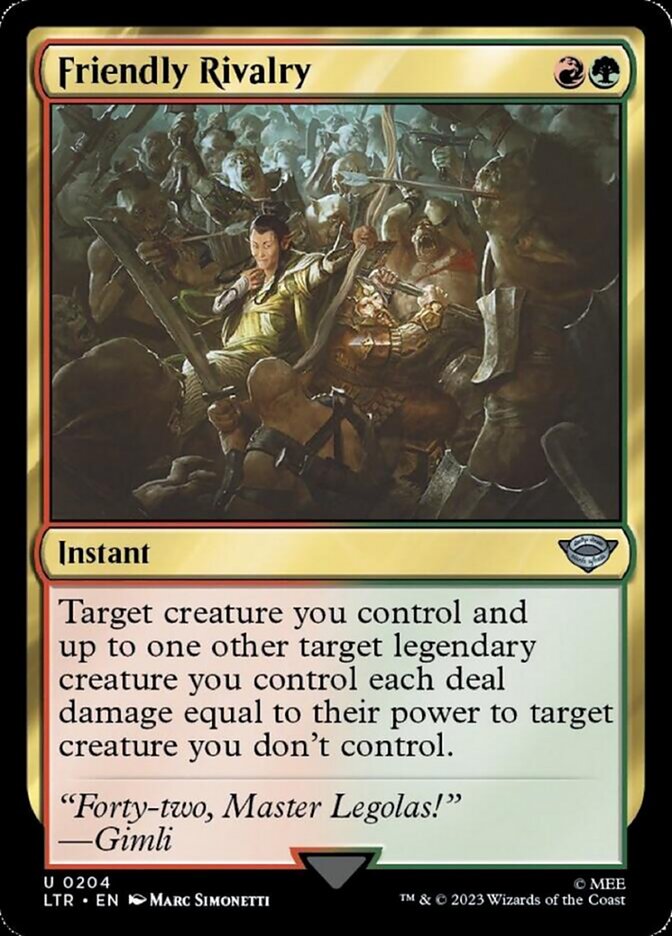
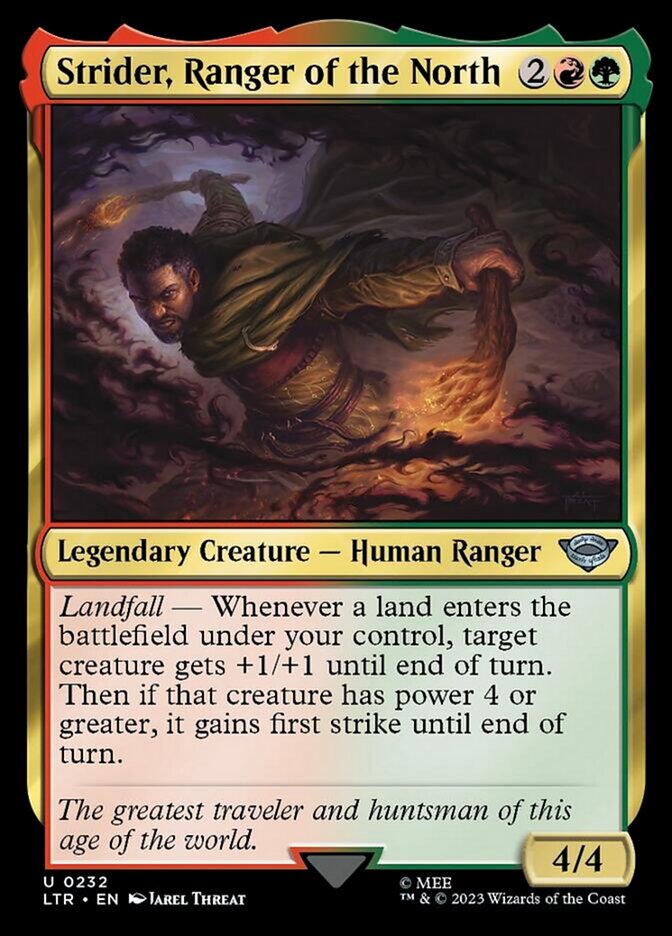
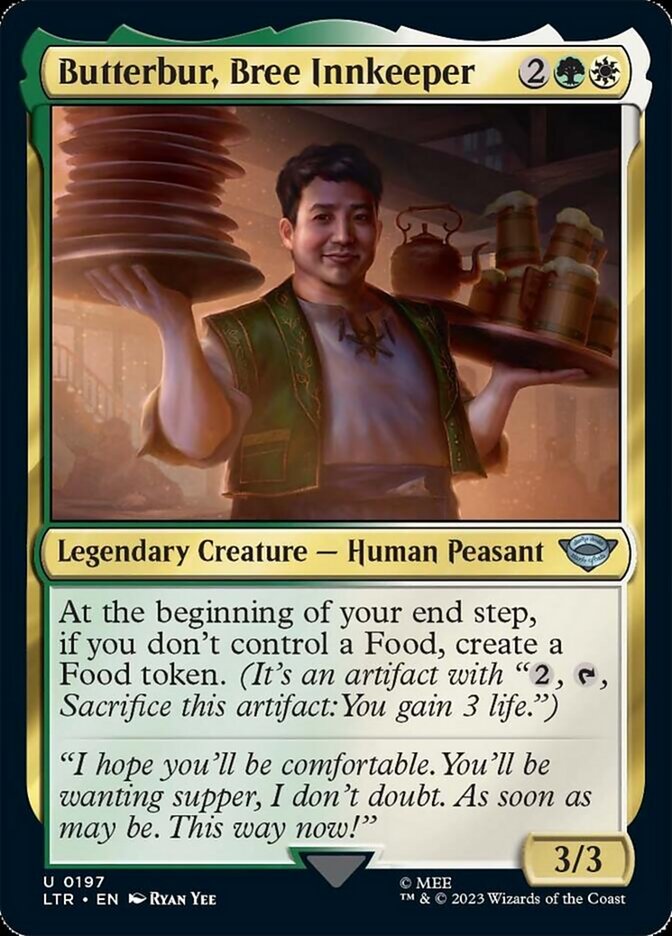
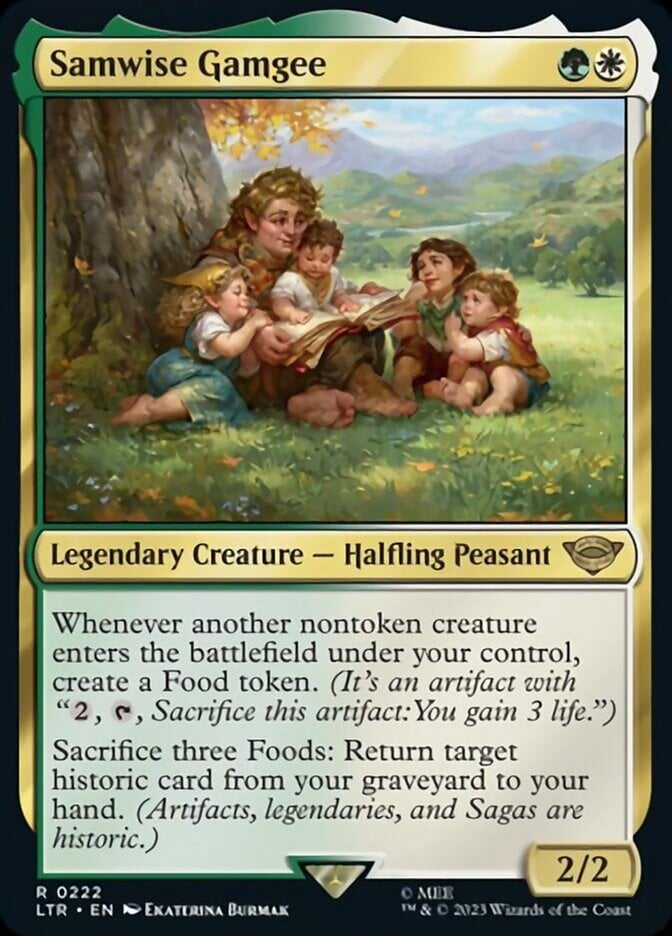

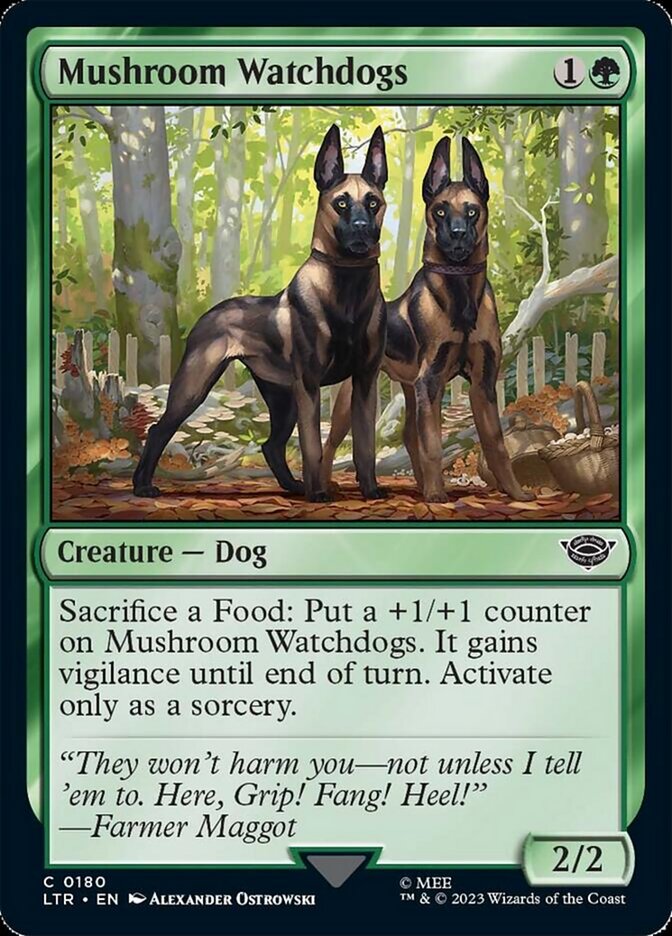


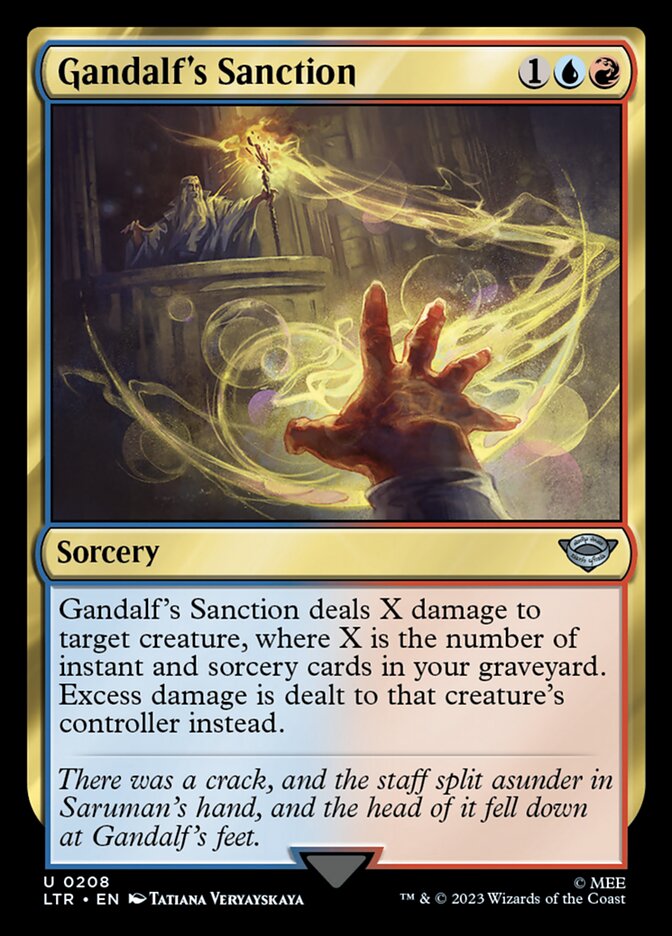
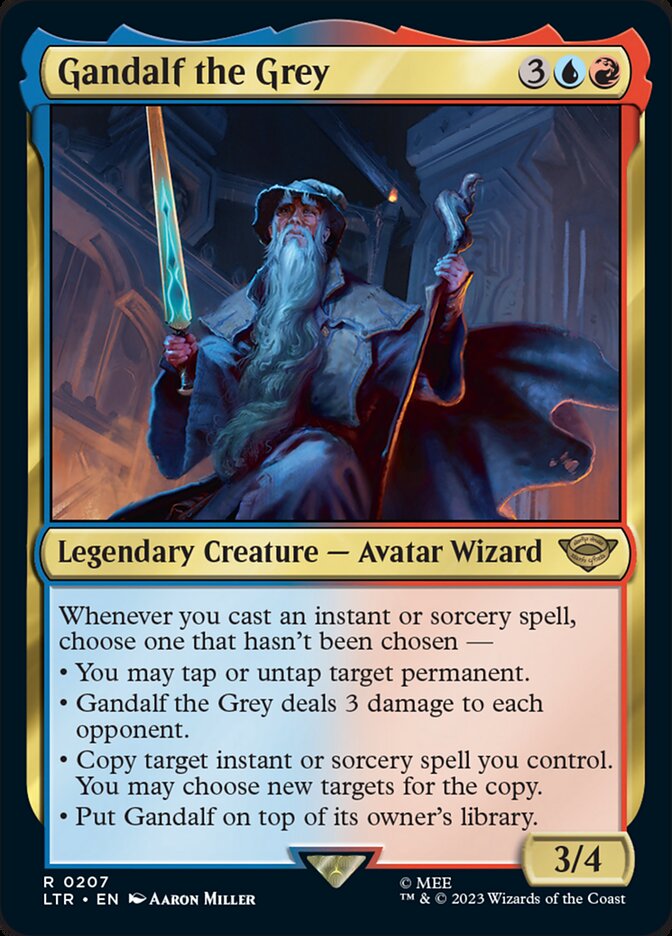
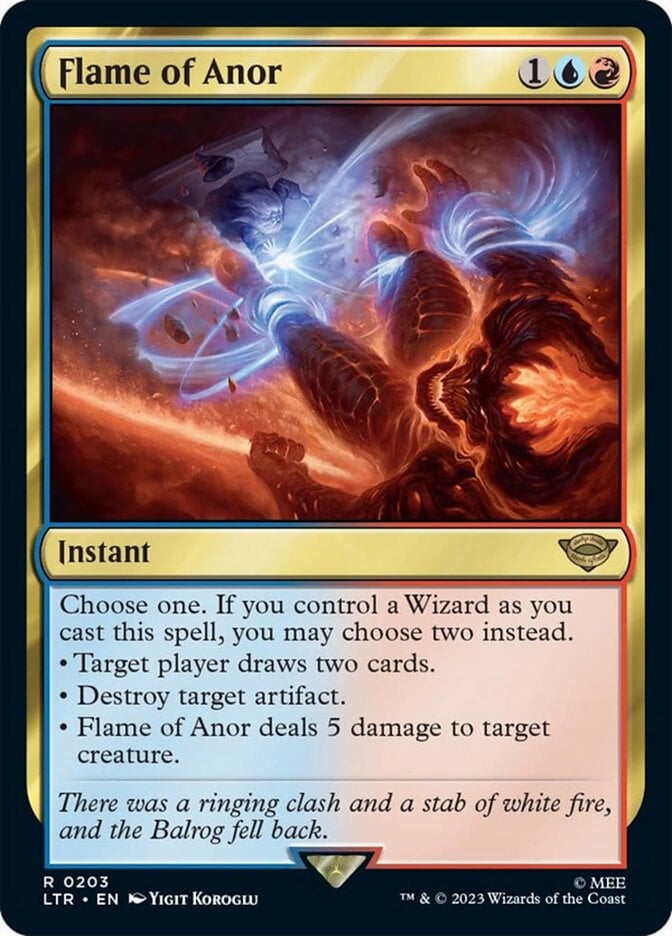


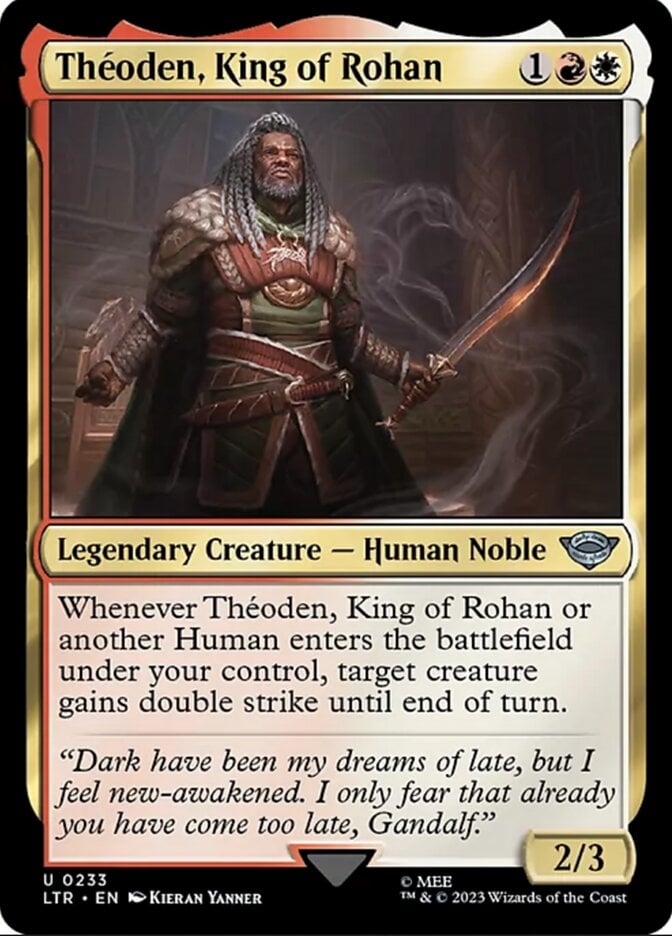
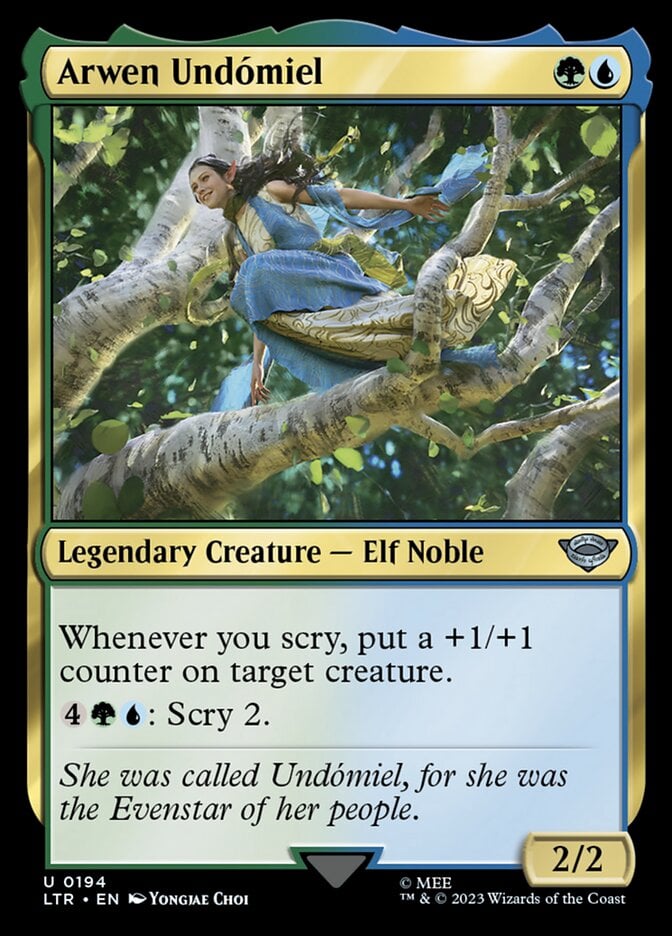
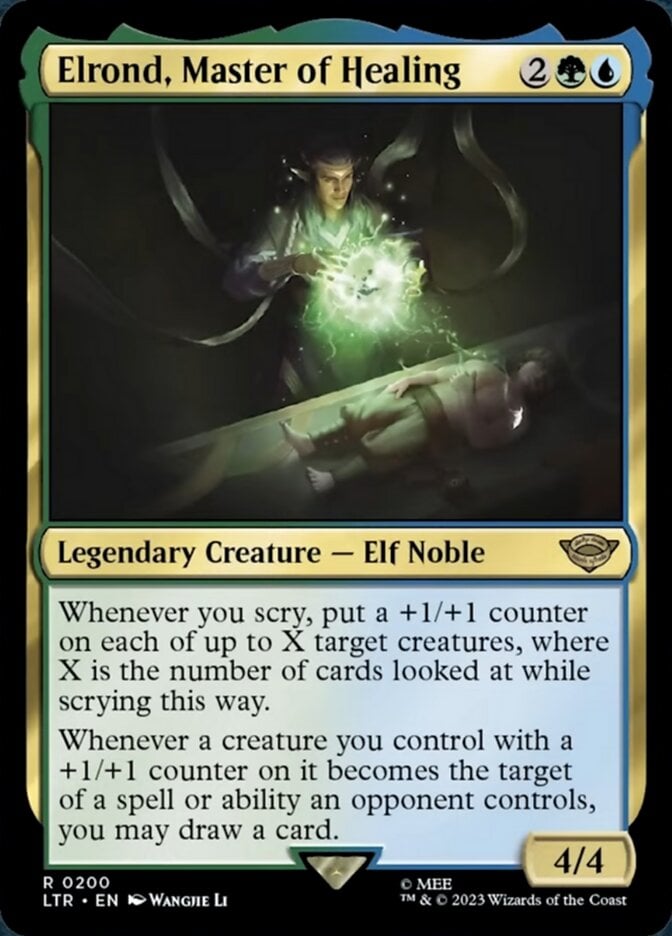
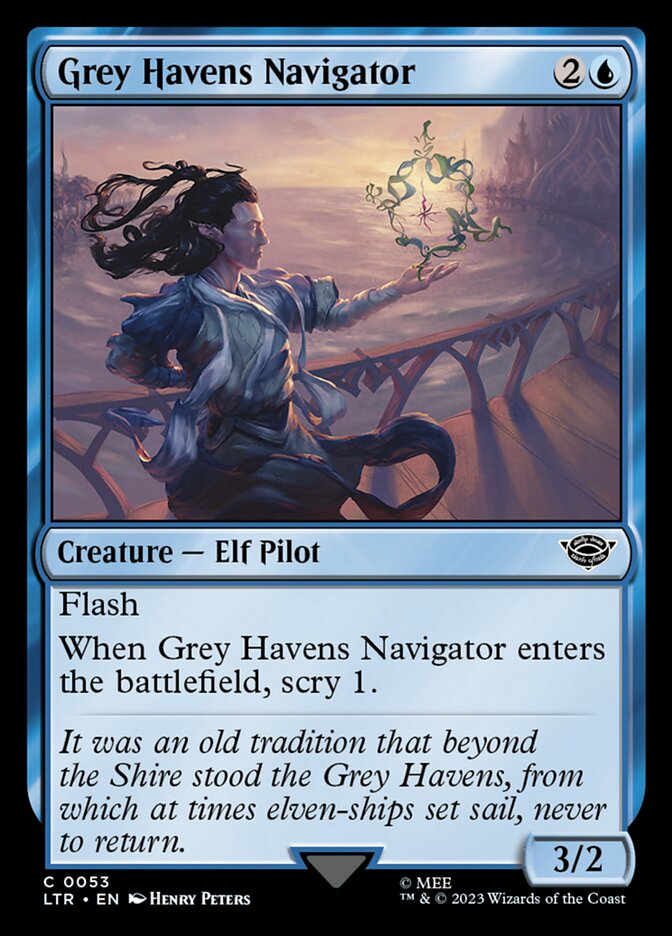

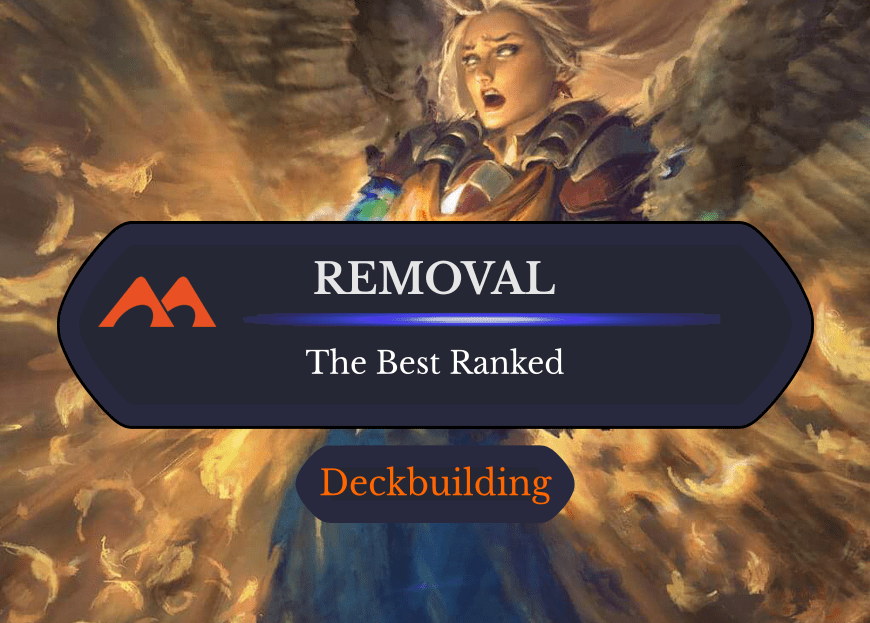
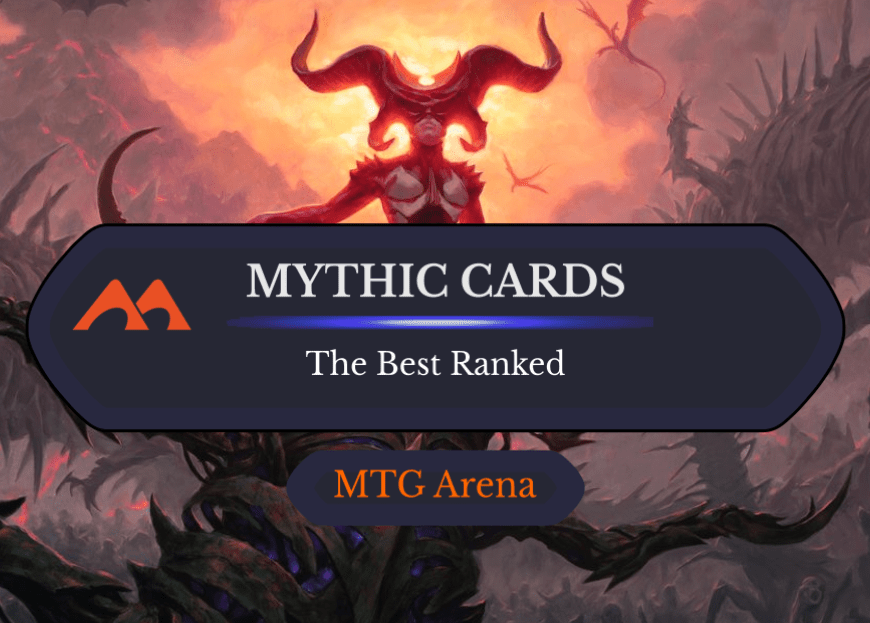
Add Comment